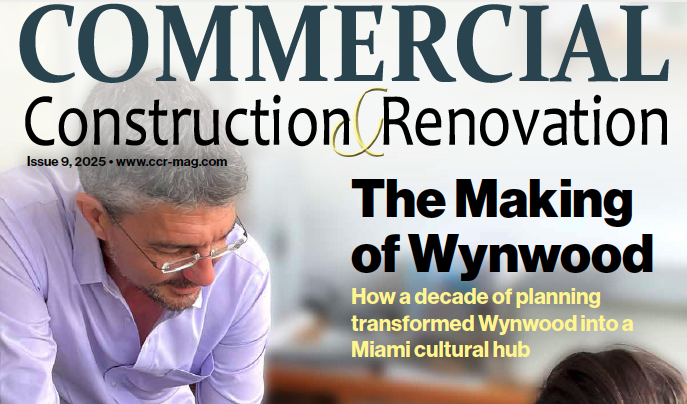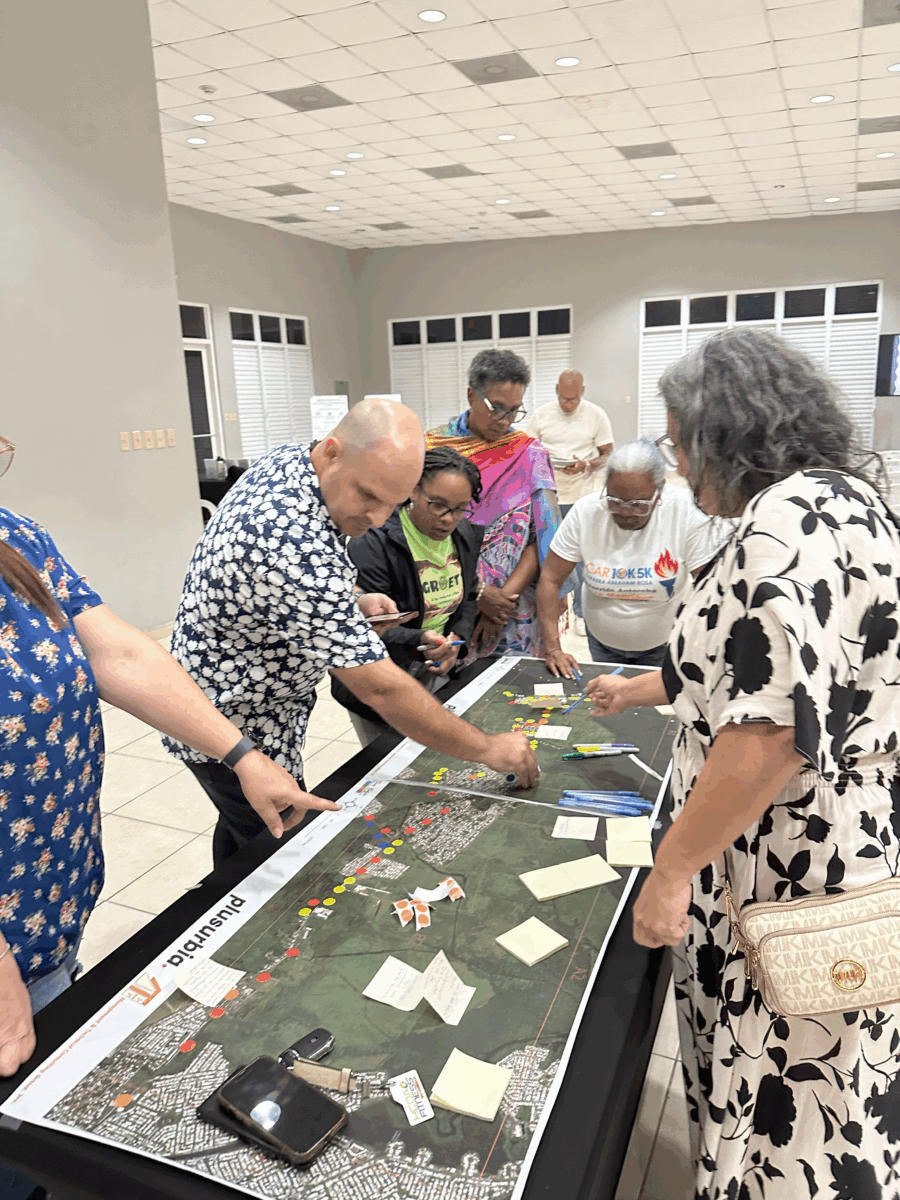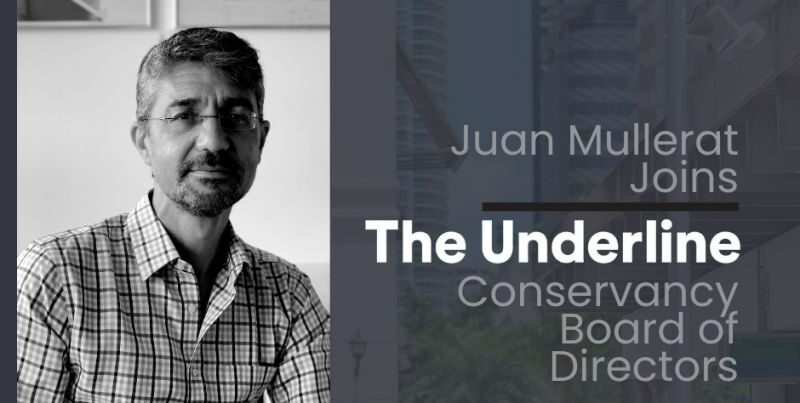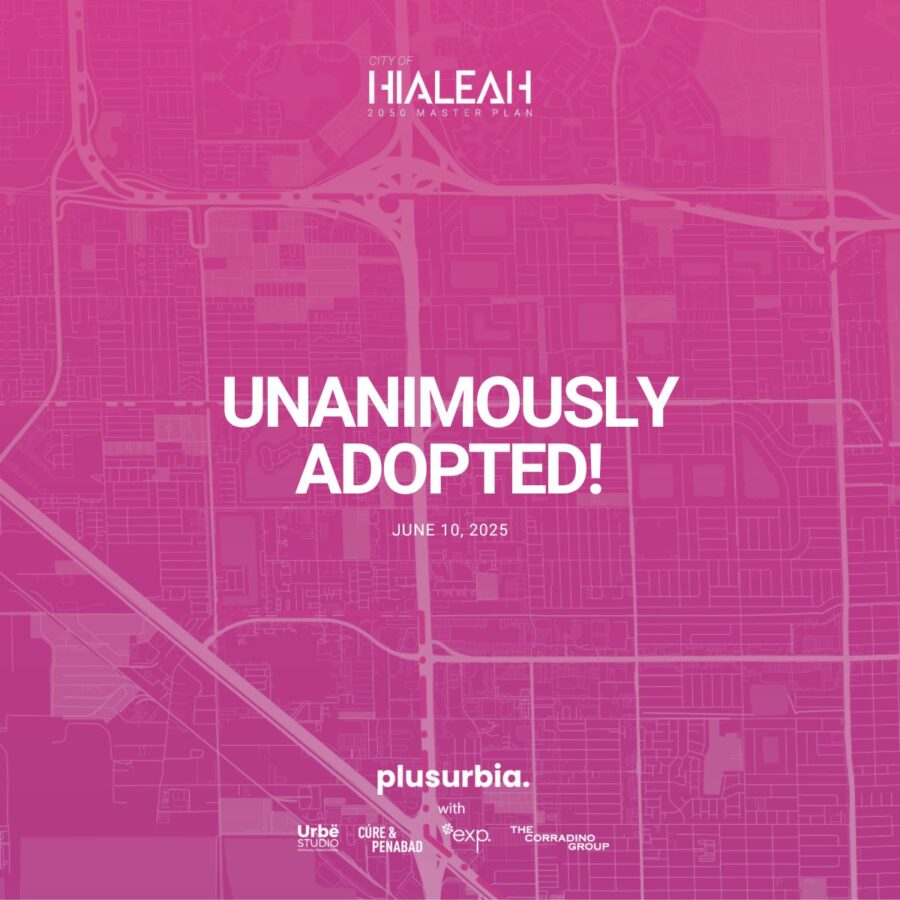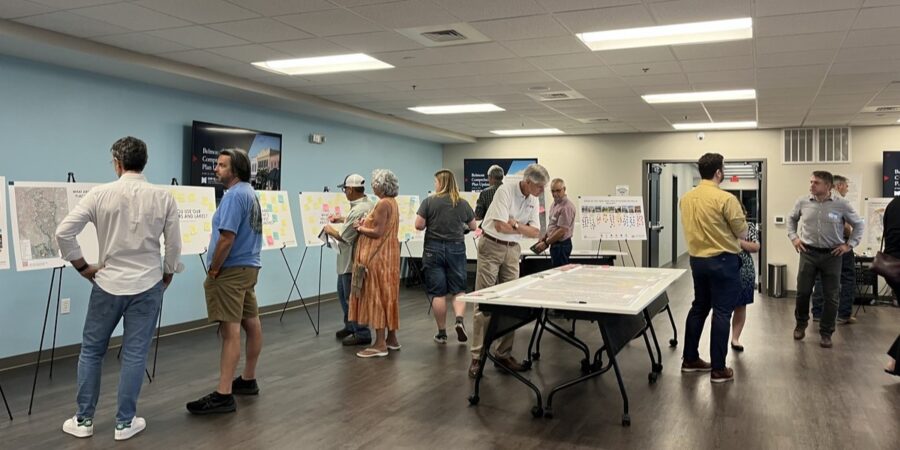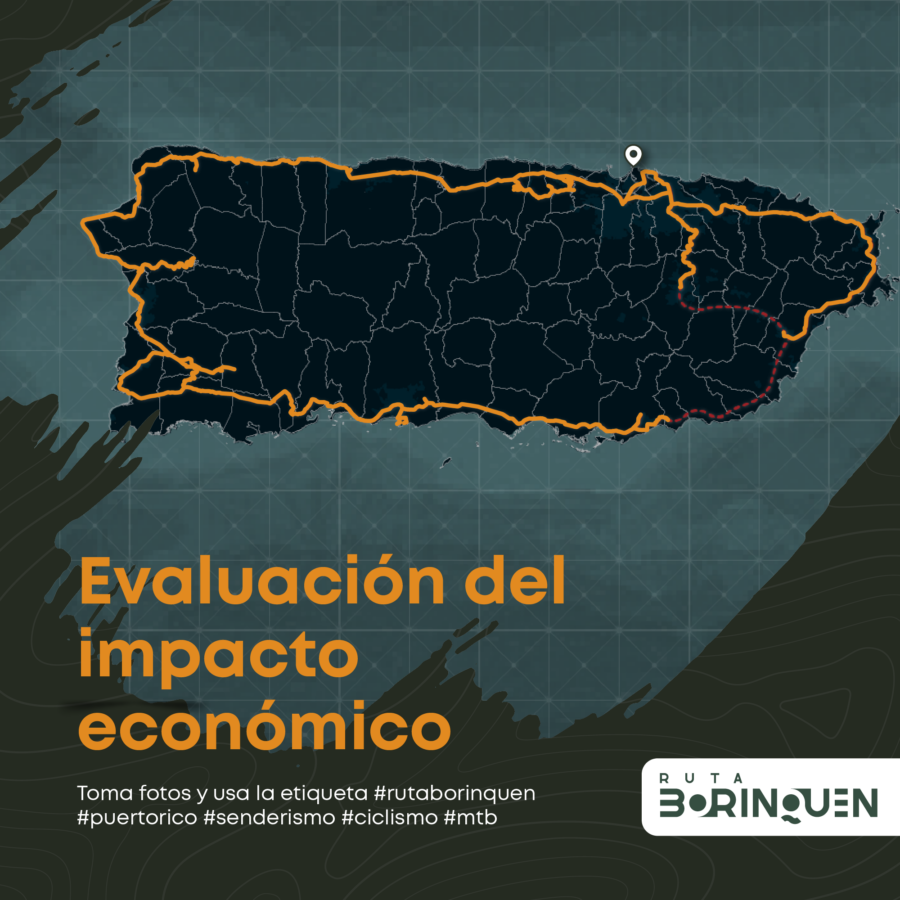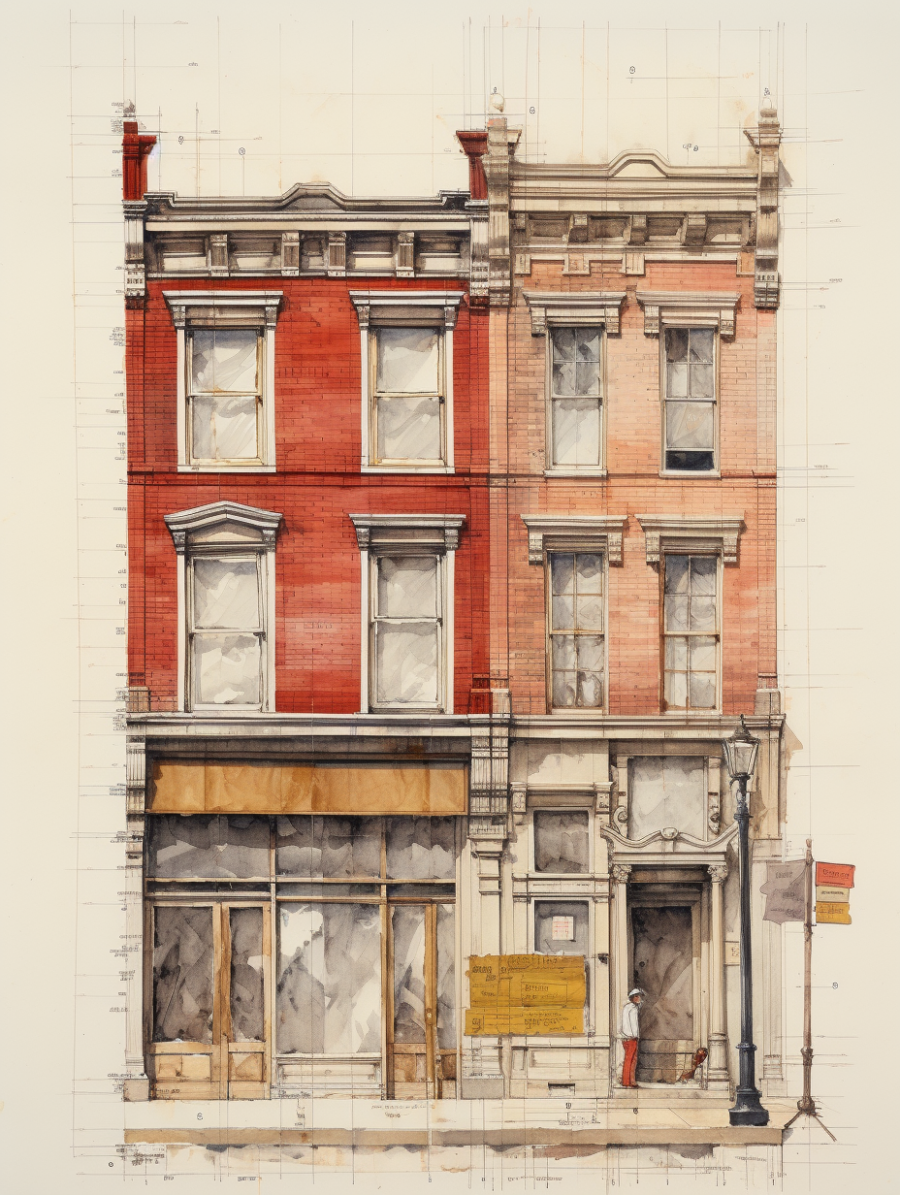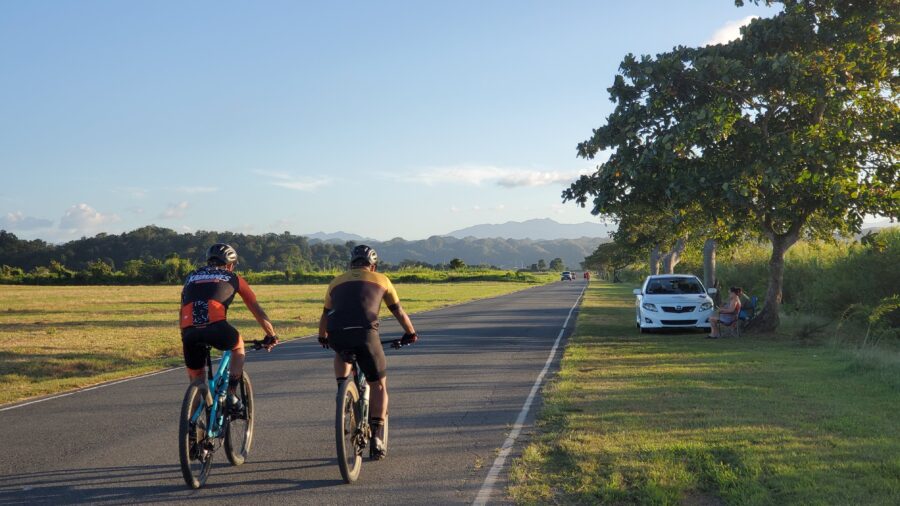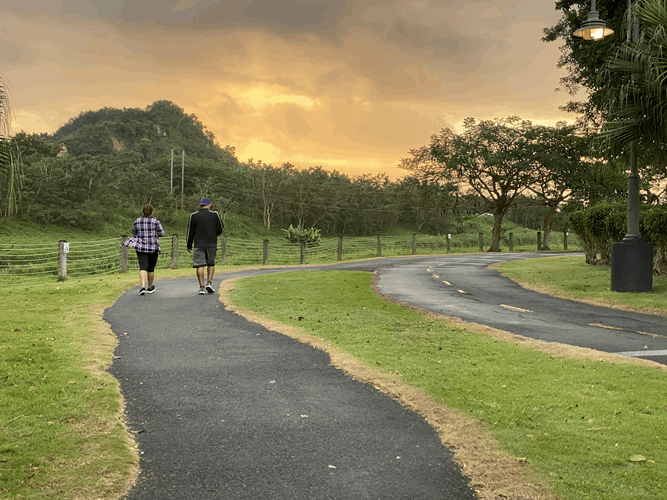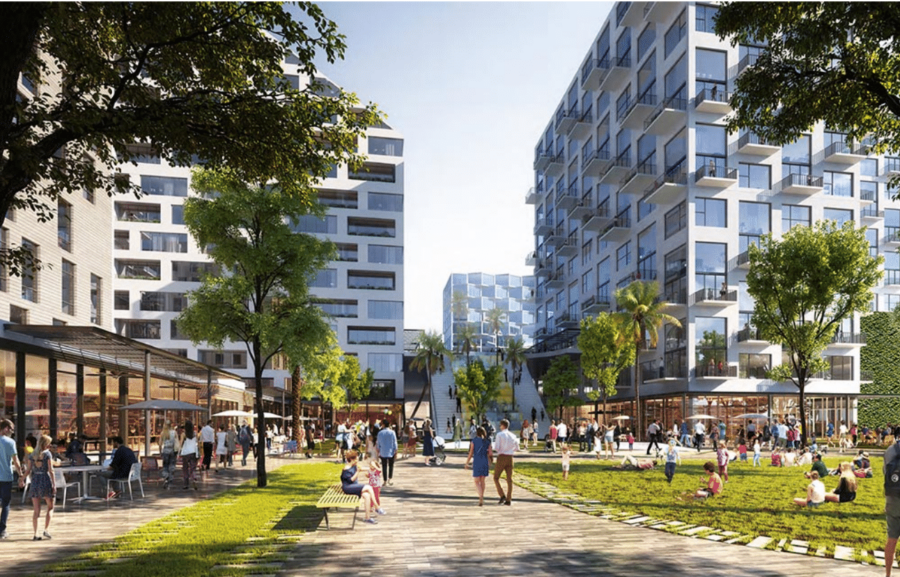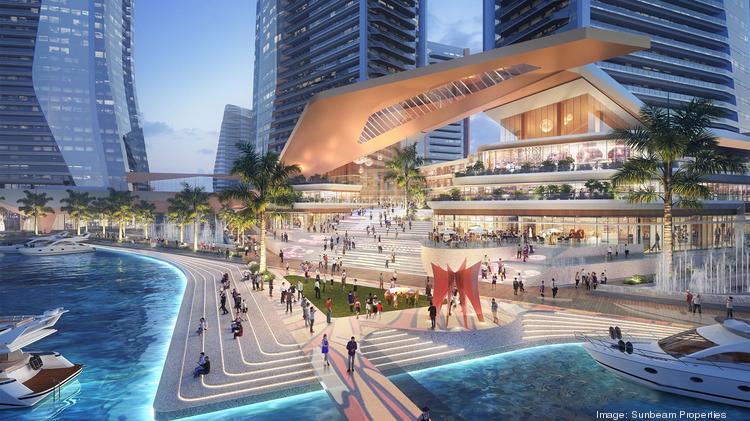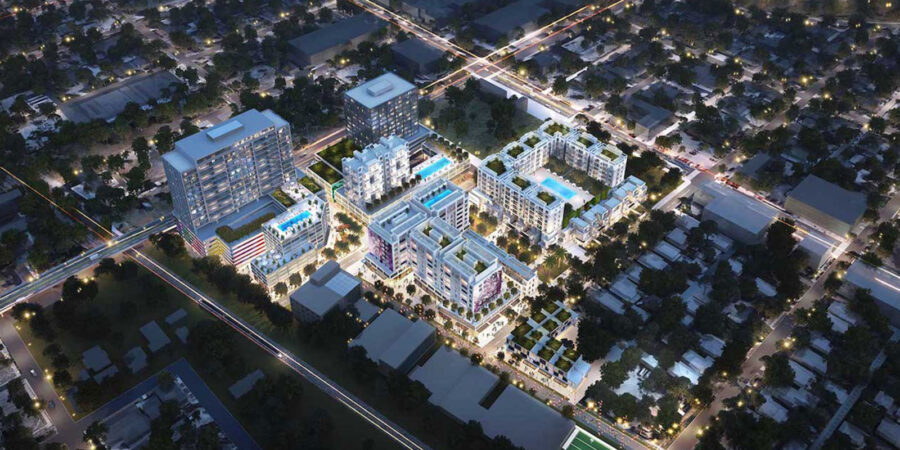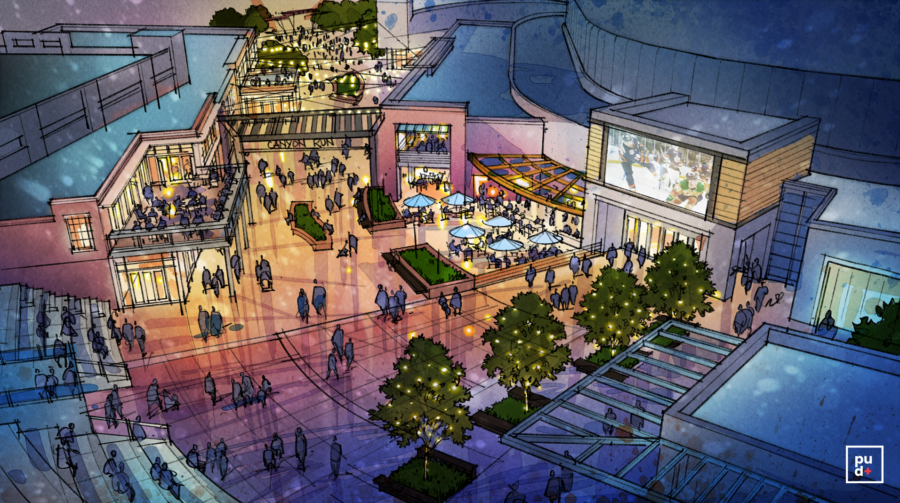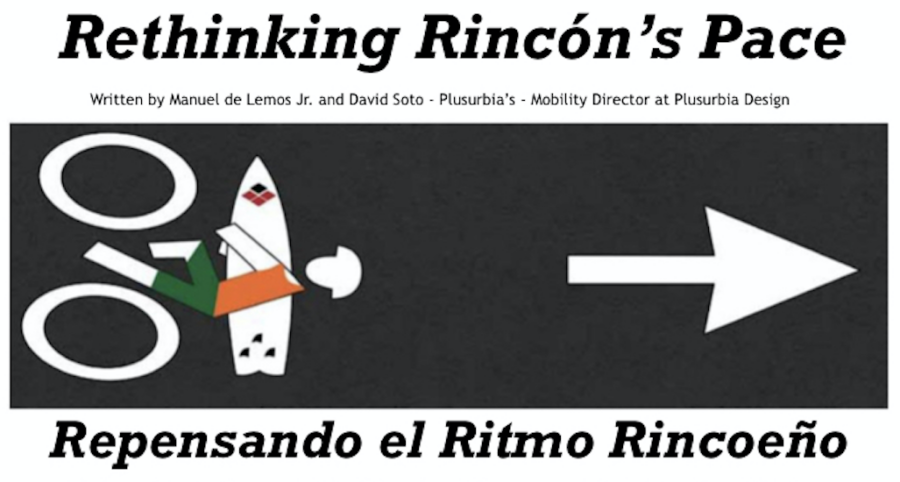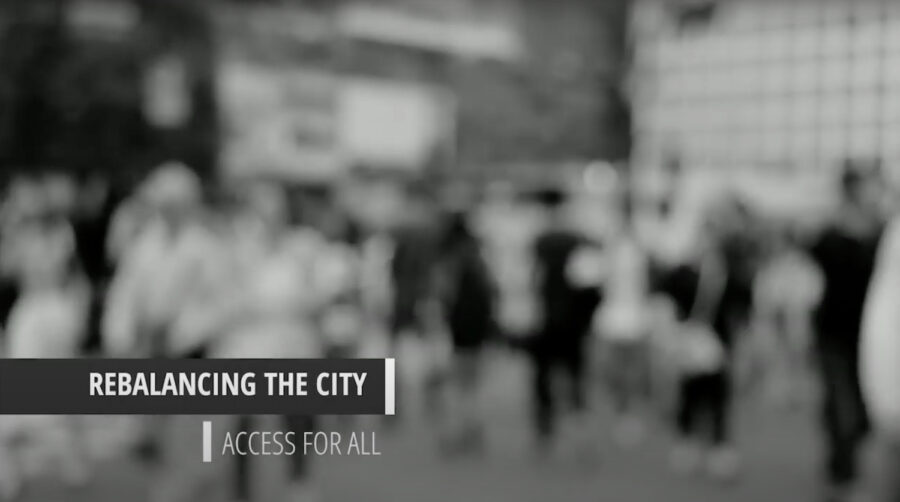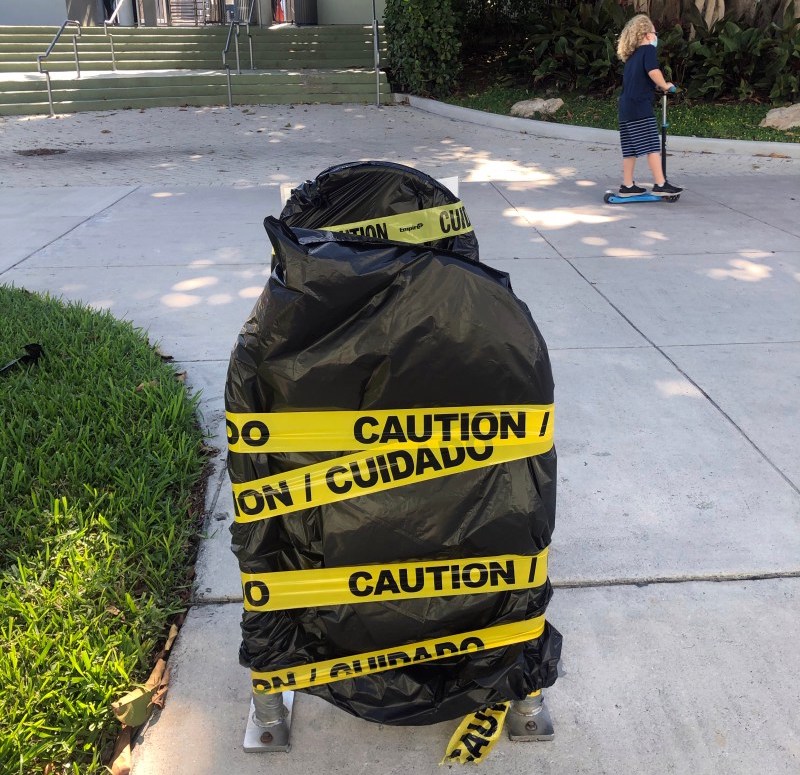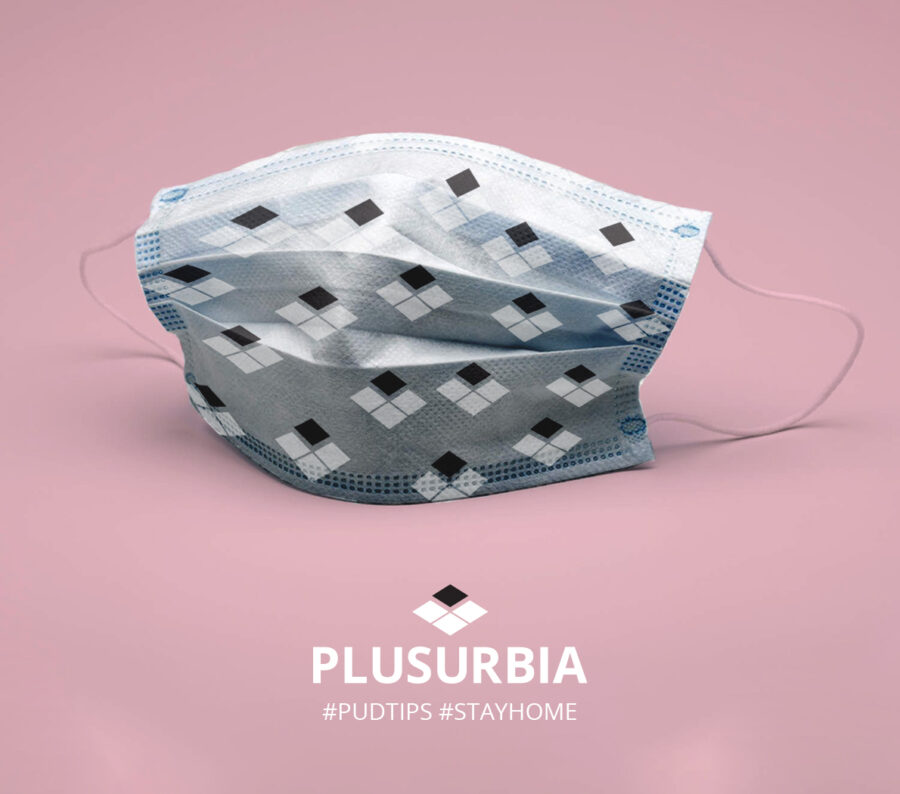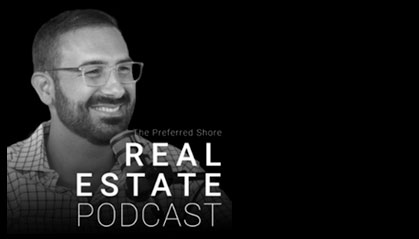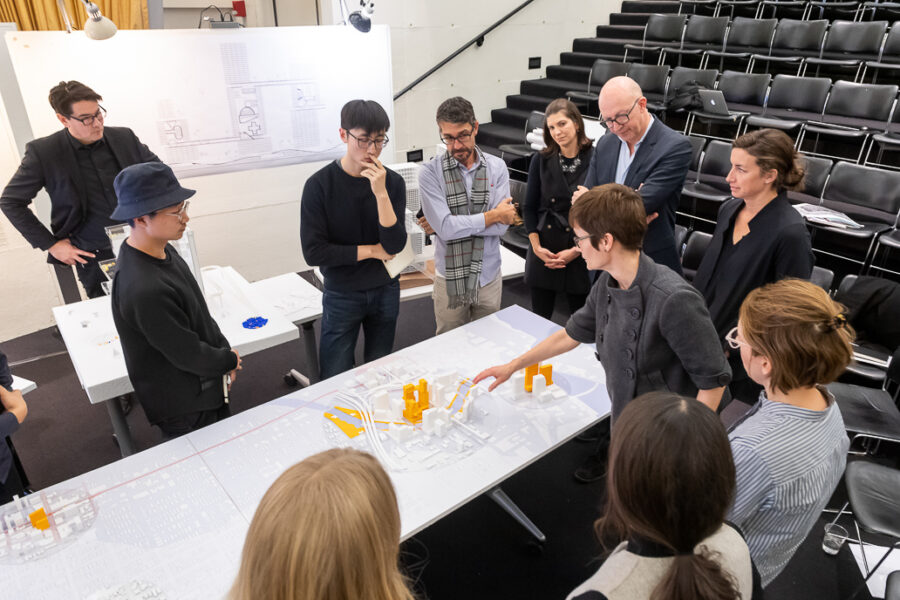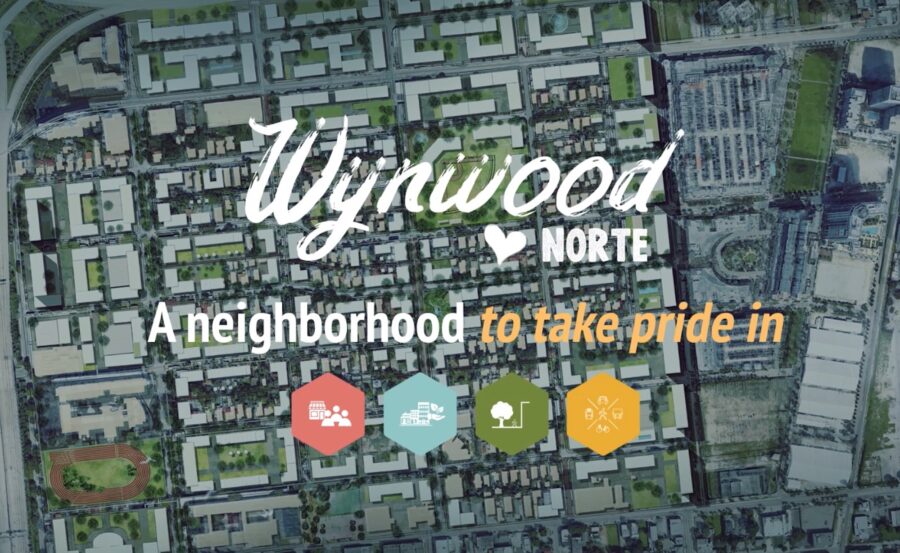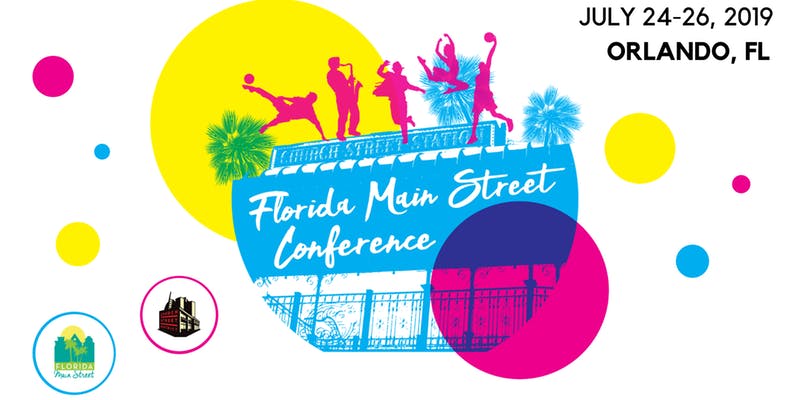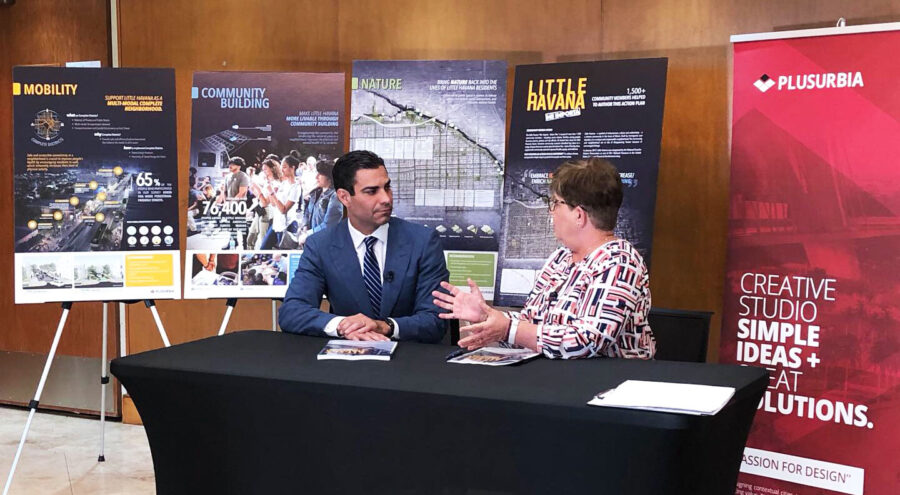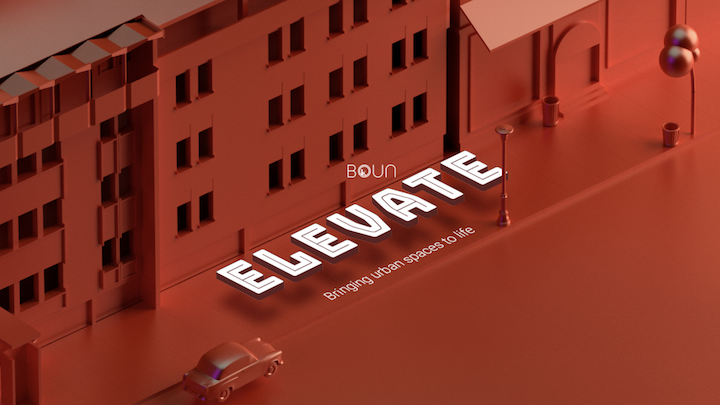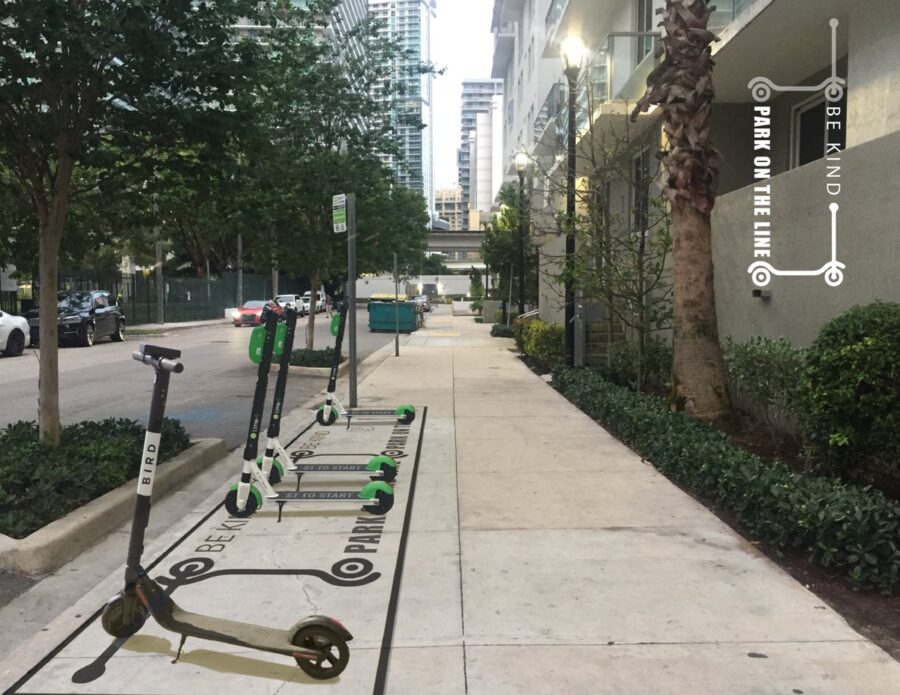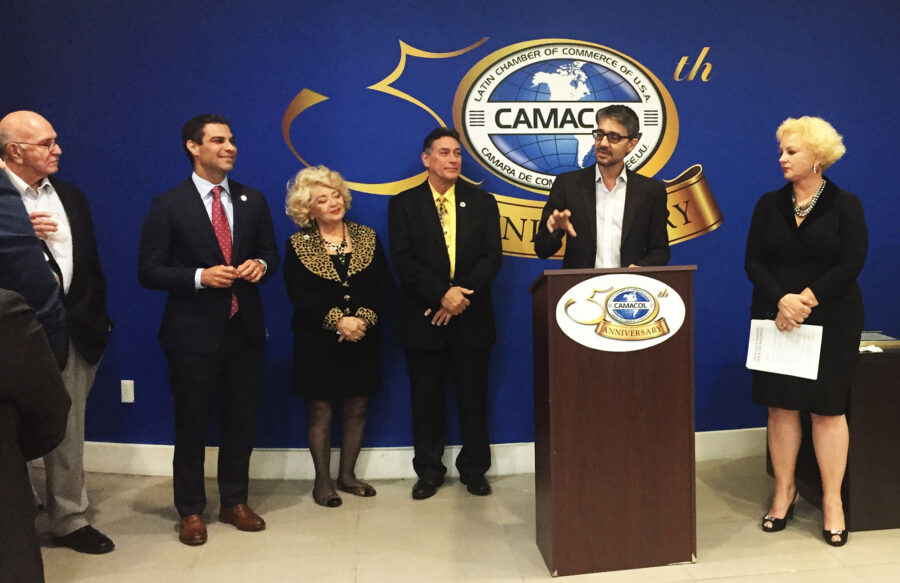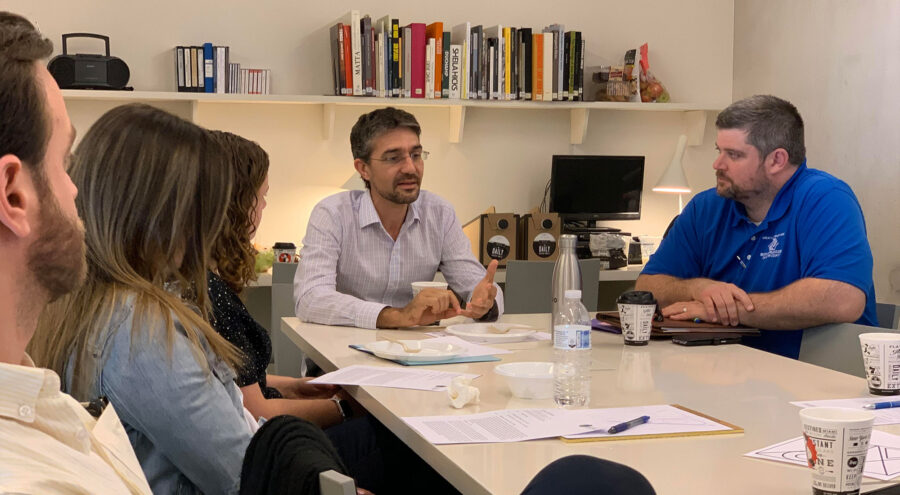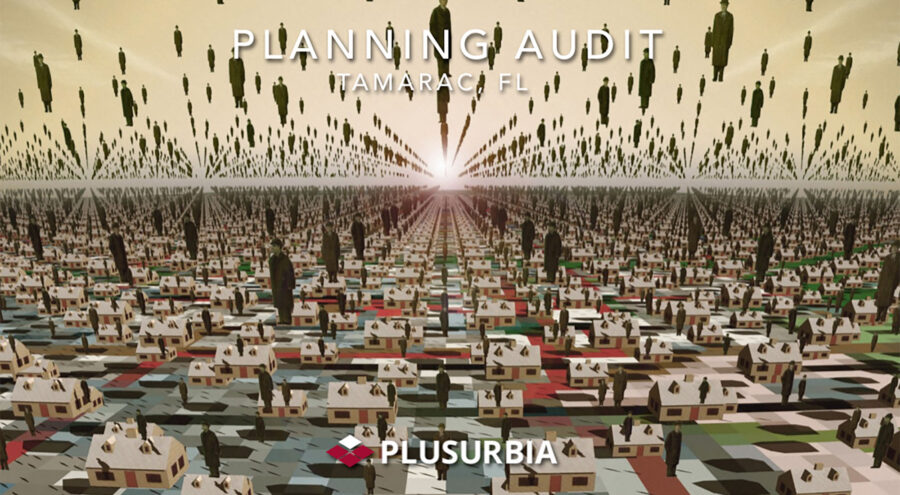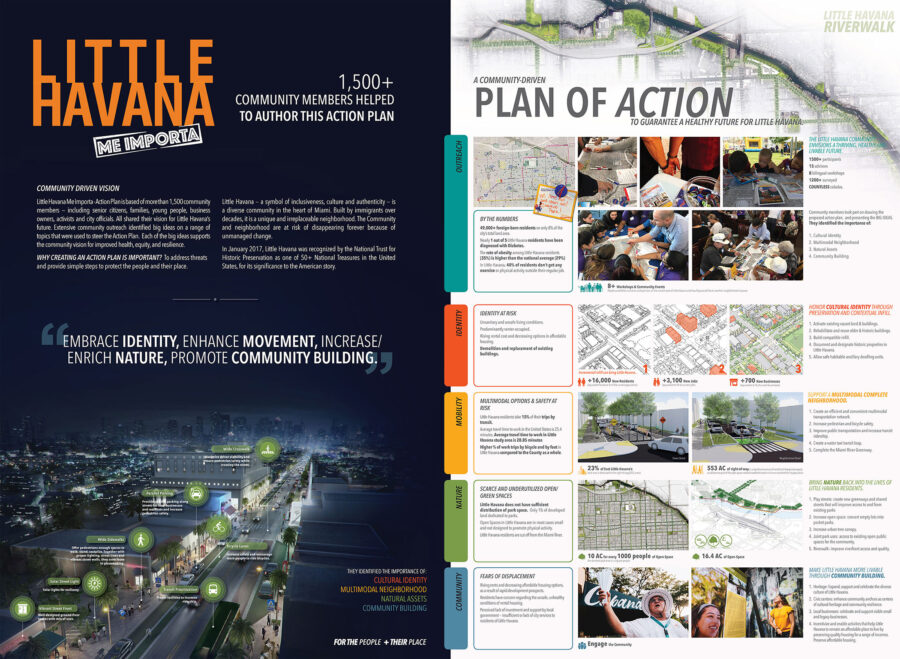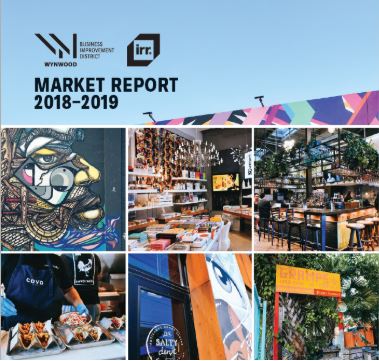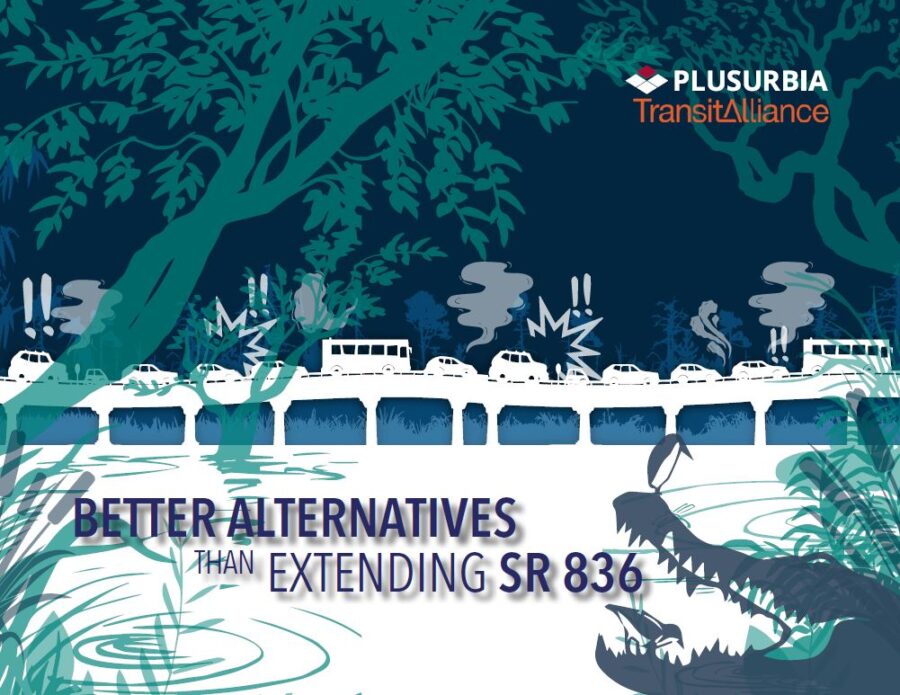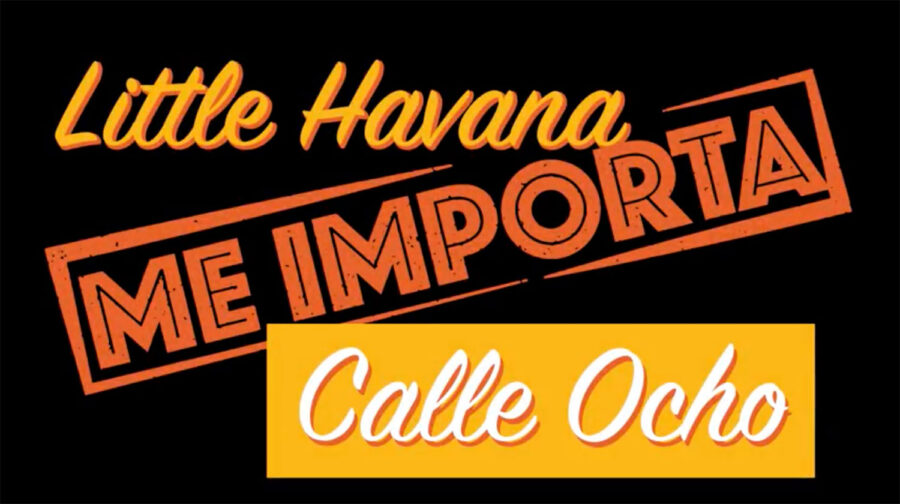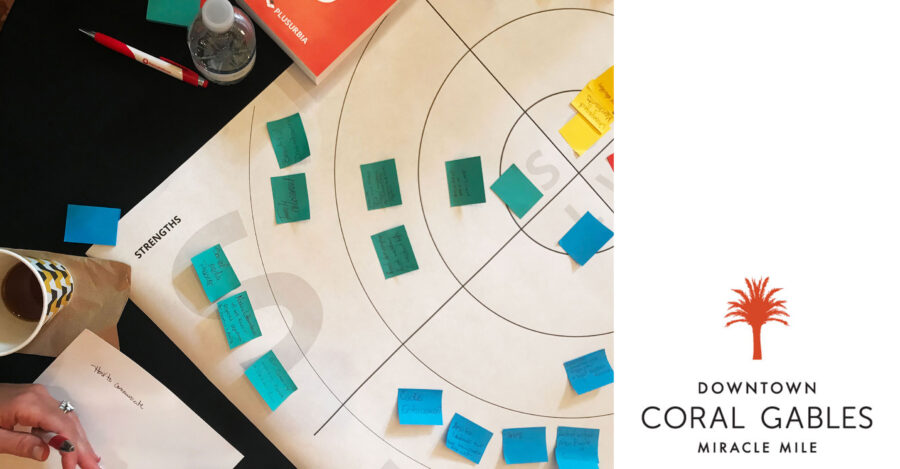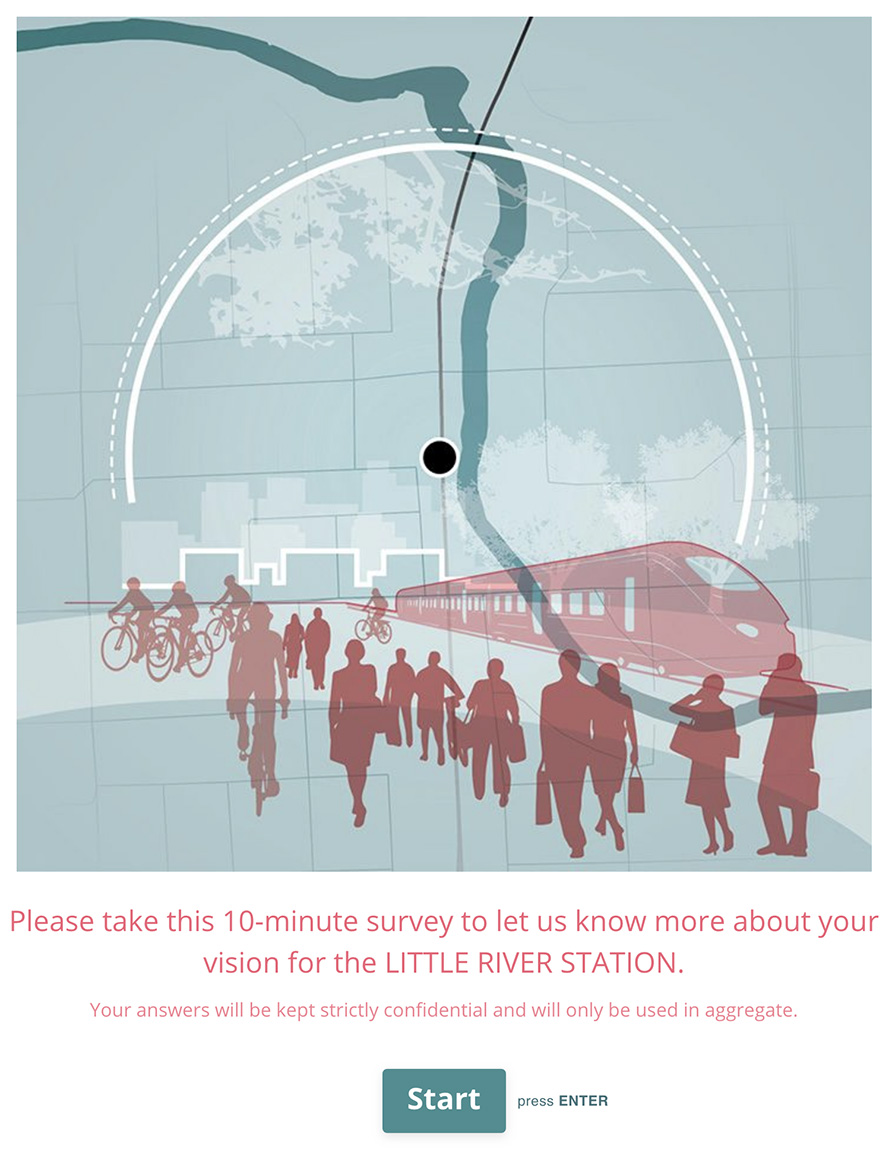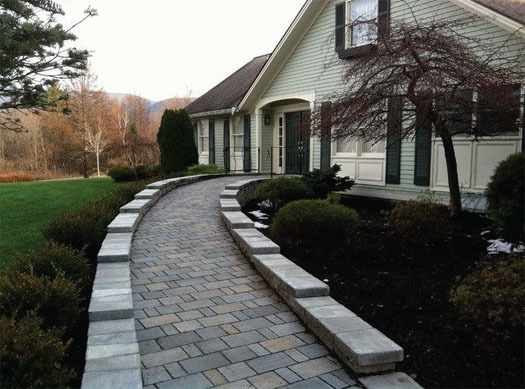our
news
AWARDS, ACCOLADES, PUBLICATIONS AND NEWS.
TOA BAJA, PR — August 2025 — Community Engagement in Full Swing! ❤️
Our team in Puerto Rico has successfully completed the first four community meetings as part of the Toa Baja Safety Action Plan—and the momentum continues to build. With four additional sessions planned, community engagement remains at the heart of this initiative.
We’re honored and inspired by the enthusiastic participation of residents and local stakeholders who are deeply committed to creating safer streets. Their insights, lived experiences, and thoughtful recommendations are shaping a plan that truly reflects the community’s priorities.These meetings represent a key step toward building a collaborative vision for safer, more accessible neighborhoods. At Plusurbia, we believe meaningful change begins with listening—and the voices of the community have been clear and impactful.Thank you to everyone who has taken part in the process so far. Your input is the foundation of this effort, and we’re excited to continue working together to create safer, more connected communities.Scroll down for highlights from the events![gallery size="medium" columns="2" link="file" ids="28647,28646,28645,28644,28638,28641,28642,28643"]
We are proud to share that Juan Mullerat, Principal and Founder of Plusurbia, has joined the Board of Directors of The Underline Conservancy.
The Underline is reshaping how Miami experiences public space, transit, and neighborhood connections. As a transformative urban project, it creates a linear park and civic destination that brings together mobility, recreation, and culture—making Miami a more connected and livable city.
Juan’s new role reflects Plusurbia’s dedication to contextual design, community engagement, and long-term planning. His experience in advancing resilient, walkable, and inclusive urban environments will help support The Underline’s continued growth as a civic space that strengthens neighborhoods and fosters connection across Miami.
On June 10, 2025, the Hialeah City Council unanimously adopted the Hialeah 2050 Master Plan, marking a major milestone for one of South Florida’s most vibrant and evolving cities. The planning process, coordinated by Plusurbia in collaboration with the city and partners, guided the development of this transformative, long-range vision.Built over nearly two years of collaboration and community engagement, the plan reflects the voices of residents, stakeholders, and local partners. Grounded in equity, connectivity, walkability, and economic opportunity, the Hialeah 2050 Master Plan provides a community-first roadmap to guide the city’s growth through 2050 while fostering neighborhood pride and enhancing the quality of life for all residents.We extend our gratitude to the City of Hialeah Municipal Government and to Debora Storch and Claudia Hasbun, AICP, for their leadership and trust throughout this process. We also thank our exceptional project team, including Urbe Studio, EXP, Corradino, and CÚRE & PENABAD, whose expertise helped bring this vision to life.Finally, thank you to all residents, stakeholders, and partners who contributed their voices, ideas, and energy to shape this plan. Together, we are building Hialeah’s future.Explore the full plan at: www.hialeah2050.com
Are you passionate about shaping resilient, vibrant communities? Do you believe in the power of innovative, context-driven design? Plusurbia Design is looking for a creative Urban Designer to join our dynamic team.Position: Urban DesignerLocation: Miami, FLType: Full-TimeResponsibilities:Develop innovative urban design solutions for diverse projects, including master plans, community development, and public space design.
Collaborate with interdisciplinary teams to integrate planning, architecture, and landscape architecture into cohesive urban designs.
Conduct site analyses, conceptual design, and detailed design work, ensuring alignment with project goals and Plusurbia's philosophy.
Engage with communities and stakeholders to gather insights and incorporate feedback into design processes.
Prepare and present design proposals, reports, and visualizations to clients and public agencies.
Stay updated on urban design trends, zoning regulations, and sustainable practices to bring fresh ideas to projects.Required Qualifications and Skills:Bachelor’s degree in Architecture, Urban Design, or related field.
Strong portfolio demonstrating experience with urban design projects, including master plans, public spaces, and community developments.
Proficiency in design software such as AutoCAD, Adobe Creative Suite, Lumion, SketchUp, and GIS.
Excellent verbal, written, and graphic communication skills, with the ability to articulate design concepts clearly.
A passion for sustainable, resilient, and community-oriented design.
Self-motivated with good time management skills.Why Plusurbia Design?Plusurbia Design is an award-winning urban planning and design firm dedicated to creating inclusive, sustainable, and context-sensitive urban spaces. We work closely with communities, stakeholders, and local governments to deliver projects that enhance the quality of life and reflect the unique DNA of each place we touch. Our approach is rooted in the principles of placemaking, community engagement, and sustainable development.Be part of a growing, forward-thinking firm that values creativity, sustainability, and community impact.
Work on transformative projects that make a real difference in urban environments, from Regional Comprehensive plans to neighborhood and district revitalization and design.
Collaborate with a talented and passionate team in a supportive, innovative work environment.
Enjoy opportunities for professional growth and career advancement.Salary and Benefits:Salary – commensurate with experience and competitive in the marketplace.
401K ‘Elective Safe Harbor’ – Up to 3% of salary.
End-of-year performance-based bonus.
Benefits include personal days off, holidays, individual medical, dental, and vision insurance, and short—and long-term disability insurance.How to Apply:We'd love to hear from you if you're ready to contribute to meaningful urban design projects and grow with a leading firm!Send your resume, portfolio, and cover letter detailing your experience and why you’re a great fit for Plusurbia Design to careers@plusurbia.com.Applications that don't meet the requirements will be dismissed. Format the email with the subject line ‘Urban Designer Position.’
Portfolio, Resume, & Cover Letter must be in PDF format attached to the email. Deadline: Applications will be accepted until September 25th, 2024.Plusurbia Design is an equal-opportunity employer. We celebrate diversity and are committed to creating an inclusive environment for all employees.Join us in shaping the cities of tomorrow—today!
Belmont, NC–Plusurbia is thrilled to announce the completion of a successful multi-month public engagement campaign in the City of Belmont. Featuring eight community workshops, informative presentations, Q&A, small group meetings and an online survey, the initiative provided essential guidance for the city’s Comprehensive Land Use Plan update.Altogether, our team received nearly 1,600 comments on Belmont’s opportunities, challenges and aspirations, far exceeding community involvement during the last plan update in 2018. We also invested over two weeks of in-person time, talking with community stakeholders and getting to know Belmont, foraging a deeper connection with residents, business owners and community leaders.
The Puerto Rican government is making strides in preserving its rich rail heritage with the introduction of House Bill (PC 2141). Filed by five representatives, this bill seeks to enshrine the preservation of 19th and 20th-century railroad routes as public policy. It also directs government entities to create a non-motorized transportation route for historical, cultural, and ecological tourism, proposing the development of the Borinquen Trail.Historical SignificancePC 2141 highlights that by the late 19th century, Puerto Rico boasted approximately 1,000 kilometers of railroads, positioning it as one of the regions with the most extensive railroad networks per square kilometer. These railroads were integral to the island’s development and historical landscape.Efforts by Plusurbia DesignPlusurbia Design has been working to preserve this legacy since 2018. The Borinquen Trail encompasses a 426-mile corridor aimed at safeguarding the historical importance of Puerto Rico’s old train tracks. This initiative seeks to enhance the island’s cultural heritage, support sustainable tourism, and engage the community.The Borinquen Trail: A Vision for the FutureThe Borinquen Trail will feature a multimodal ecological route designed for biking and pedestrian use, traversing the Puerto Rican archipelago. It will link various natural, historical, cultural, tourist, and gastronomic attractions along the old rail routes. This pioneering project promotes health, stimulates economic and tourist activity, and fosters a vibrant cycling and pedestrian community, all while preserving and celebrating Puerto Rico’s natural, historical, and cultural heritage.
Tactical urbanism is part of the toolkit communities have to transform their streets, fostering innovation, awareness of pedestrians and micro-mobility on the road, and community belonging. Tactical urbanism revitalizes neglected spaces by empowering citizens to reshape their surroundings with small-scale, quick interventions. It cultivates a powerful civic pride, driving positive social change and sustainable development.At Plusurbia, we believe that tactical interventions can lead to long-term change. Establishing a long-term vision is critical before Tactical Urbanism interventions are considered. We work with our clients to create roadmaps that address communities' needs and create lasting change. Exercises such as mobility master planning, corridor studies, and comprehensive planning, are critical steps in generating the long term vision for mobility in any given city or township.Comprehensive and mobility planning are a careful balance between enhancing the existing public realm while anticipating future development needs. We combine best practices in complete streets design with local knowledge of network planning. As such, site visits and community outreach are core to the process of generating viable solutions that work for everyone. A successful study takes care to look beyond crash data analysis, towards travel patterns and safety audits to identify community needs that match community desires and support economic development.These planning strategies generate high-level recommendations, such as corridor selection and prioritization, necessary for the funding, design, and construction phases of projects. In addition, long-term visions are key to define objectives that lead to short-term implementations, such as pilot projects. This is where tactical urbanism is key, by creating projects that are implementable in a short period of time, which is key to demonstrate progress. This is why we are using tactical urbanism to advance the Borinquen Trail, an island-wide trail network for Puerto Rico.Tactical urbanism facilitates practitioners and governments, along with communities, to partner on advancing the implementation of soft treatments, such as pedestrian crosswalks, bicycle route symbols on pavements, and signage that will be the base for a future street improvements through reconstruction. Most of all, it is empowering to communities that wish to support safety advocacy efforts, and this empowerment leads to public policy success as communities adopt a culture of safe driving, rolling, and walking. As an added bonus, communities may adopt these tools as a means to continue the conversation beyond pilot projects, and these desires can be supported by governments through street improvement permitting and adopt-a-street initiatives.
On Celebrate Trails Day (this Saturday, April 22), Rails-to-Trails Conservancy (RTC), the largest U.S.-based trails advocacy organization, showcases the impact of trails and trail systems on people, places and the planet by encouraging everyone to get outside on trails.Joining this year's celebration is the Borinquen Trail in Puerto Rico as part of its partnership with RTC. In addition, Borinquen Trail will collaborate with RTC on technical assistance initiatives and advocate for funding sources and best practices in trail implementation. Since 1992, RTC has helped advocate for more than $20 billion in funds to support more than 40,000 trail and active transportation projects throughout the nation.The Borinquen Trail is a 600-mile multi-use trail for walking and bicycling, endorsed by RTC. The trail repurposes former railroad right-of-way encircling the island, including breathtaking beachfront and historic tunnel segments. The route will connect 22 municipalities and, once fully implemented, could generate up to $673 million in annual user spending through direct, indirect, and induced economic effects. Adding to this sum will be the growth and creation of businesses associated with the outdoor recreation industry, including restaurants, sports equipment and bicycle rental establishments, history and tourism groups, hotels, and more. The trail could support between 4,708 and 7,294 jobs and is expected to spur an annual $21-41 million in new island and federal tax income.The implementation of the Borinquen Trail has already begun, a critical step in the island’s journey to a more sustainable environmental, and resilient future. Last month, planning for the Borinquen’s pilot project in Playa de Ponce (in the south of the island) was completed, and new local partners are joining to drive construction and designation of the trail. When finished, it will establish a multimodal connection between two historic centers: Playa de Ponce and the municipality’s town core.The Borinquen Trail has the potential to significantly increase tourism island-wide, create thousands of jobs, and improve public health across Puerto Rico. With the rail-trail already in motion, there is much to look forward to as its route unfolds over the coming years. To learn more and support this effort, visit https://www.rutaborinquen.org.Celebrate Trails Day is the annual celebration of the spring trail season, recognized on the fourth Saturday in April. The national celebration is organized by RTC, the largest U.S.-based trails organization—with a grassroots community more than 1 million strong. RTC is dedicated to building a nation connected by trails, reimagining public spaces to create safe ways for everyone to walk, bike and be active outdoors. Follow #CelebrateTrails on social media for updates, and connect with RTC at railstotrails.org and @railstotrails on Facebook, Twitter and Instagram.
Last January, our team collected information for an ongoing economic impact analysis of the trail, which will provide hard numbers to prove its value. Dylan Gehring and David Soto visited existing trail segments that will one day be connected and integrated into the future 595 mile Borinquen Trail. They ran trail counts every day during peak-use times and collected trail user spending data by conducting brief surveys. They also examined portions of the old railroad embankments and bridge systems that are not currently trails. Among the trails surveyed, Paseo Lineal Río Bayamón proved to be the most popular and highest-quality segment.Dylan and David conducted seven days of consecutive data collection across five trails (2 trail segments were repeated to determine the factor of difference between weekdays and weekends) which garnered about 550 responses. The selection of the trails studied was tied to the necessity of having an example of each typology: urban, suburban, rural, beachfront, and natural preserve. This data will be used for an economic impact analysis and to continue to assess and design future segments of the Borinquen Trail.
The Next Miami: Article
December 22, 2022Renderings have been released for Upland Park, a $1b transit-oriented development planned near the Dolphin Mall.
The development will be “the first truly viable alternative to automobile commuting,”. Upland Park is being purpose-built for integration with the upcoming east-west transit corridor, according to the developer. The community will have expedited access to major employment areas such as Miami International Airport, the Health District, Downtown and Brickell, the developer says. The project site itself is at the planned Dolphin rapid transit station. [caption id="attachment_27290" align="aligncenter" width="1290"] A rendering released by Miami-Dade County showing the BRT service planned on the east-west corridor of the SMART plan[/caption]Once inside the community, residents and workers will enjoy a master-planned walkable neighborhood with built-in traffic solutions, along with resiliency features. The goal is to also have a variety of residence sizes and price points within the neighborhood, catering to “all ages and audiences,” from students to seniors.
Sunbeam, controlled by the billionaire Ansin family and owner of TV station WSVN, won approval this month to build a massive walkable development in North Bay Village.As part of the approval, a construction permit must be applied for within two years.The project will include 7.3 million square feet, including 8-10 towers rising up to 650 feet, with:1,936 residential units (117 will be workforce housing units)
200,000 square foot Class A HQ office building
300-room luxury hotel with sky restaurant and observation deck (Hyatt signed a letter expressing interest in operating the hotel)
670,000 square feet of commercial, with grocery store, restaurants, entertainment, and retail
a small production studio
a state-of-the-art marina
5,000 parking spacesUniversity of Miami architecture students studied the property to help come up with a plan. The goal is to create a “15-minute city,” with essential needs within walking distance.A baywalk along the waterfront called Island Walk is planned. The developer also wants to build a pedestrian bridge across 79th street (the property spans both sides) and add a water taxi/ferry service.The developer told the SFBJ that the first phase will include two towers with 500 to 600 units, with ground floor grocery, restaurants and retail.Plusurbia is designing the project.
West Palm Beach will be moving in a new direction as developers begin executing on a plan to remake an industrial neighborhood north of Downtown into a food and retail hub. The district, rebranded “Nora,” spans 40 acres in the environs of North Railroad Avenue, and will include 2 million square feet of residential and office development, as well as a hotel.The redevelopment is being led by NDT Development and Place Projects, which spearheaded the reshaping of Miami’s Wynwood district. Urban planning firm PlusUrbia had a hand in creating the major design elements as Downtown expands. Wheelock Street Capital is financing the venture with a budget of up $150 million for the first phase alone, Bloomberg reported.
Urban planning group Plusurbia Design revealed what the future of the Greenville Gateway could become on Tues., Oct. 18.After a series of community meetings and a survey earlier this year (which received 479 responses), the urban design group designed a future look for specific areas of the corridor, including:Bon Secours Wellness Arena
East North Street (at the end of I-385 + continuing past The Well)
Pettigru Historic DistrictSome of the most notable changes proposed include transforming East North Street with trees, bike lanes + additional apartments and shifting Bon Secours Wellness Arena’s entrance into a pedestrian-friendly entertainment hub with restaurants and outdoor space.The project, initiated by the owners of local automotive marketing agency DOM360, focuses on a specific corridor of Greenville between these streets:North Church Street
East Washington Street
Atlas Street
Sunflower Street
Richland WayFamiliar places in this area include Bon Secours Wellness Arena, Greenville’s Law Enforcement Center, and the Pettigru Historic District.Plusurbia Design will help develop and implement this vision with private + public funding, and with input from community leaders, organizations, and you.
It fills us with pride to have been outlined as experts in cyclist mobility in Ciclosfera Magazine. Biggest thanks to Muévete en Bici Puerto Rico and the cyclist community for continuing to elevate our archipelago's presence as a cycling-tourism destination at the global forum..Read the article here: https://www.ciclosfera.com/…/ciclosfera-31-invierno-2019-2…/
Calle Ocho risks losing many businesses if the government does not allow for expanded outdoor seating by using parking lanes and closing streets.Brianna LopezJuly 8, 2020Little Havana business owners are finding themselves at an extreme loss of business as the COVID-19 pandemic continues for longer than anyone expected it to. For months, Calle Ocho has been clear of the tourists and visitors that would usually flood the streets because of the mandated shutdowns of many businesses, in addition to the closure of dining rooms in restaurants. Businesses have suffered tremendous losses because of the lack of foot traffic on the Calle Ocho strip.Calle Ocho is a South Florida pillar that thrives on tourism, travel, and restaurants. Many of the restaurants are family-owned, run by generations of families who began their journey to Miami when they immigrated from Cuba in the 1960s. These people know what it is like to start from nothing and have worked all of their lives to build their businesses, pouring blood, sweat, and tears into the restaurants and shops that tourists love to visit.To read the complete article, please click here.
Plusurbia's Manuel de Lemos and David Soto authored a piece regarding the high traffic volumes and speeds in Rincón, Puerto Rico, for El Coquí of Rincón Magazine. The article, "Rethinking Rincón's Pace," calls for rethinking mobility in Rincón. It advocates for proper investments in multimodal streets and emphasizes a community's need for access to safe streets, free from the risk of transit at dangerous speeds, and with universal access to people of all ages and abilities.Unfortunately, the need to mitigate the danger from speeding vehicles was highlighted when a tragic accident occurred in the area on June 10, 2020, in which one person died when a conductor lost control of their vehicle and crashed into an eating establishment where the victim was seated.Please follow the links below to access the news articles about the incident:El Vocero Puerto RicoTelemundo Puerto RicoBelow, the article published in El Coquí of Rincón magazine:
A healthy city calibrates and makes room for mobility changes on their streets over time to encourage low-tech safe and accessible options to move around. It needs to provide more balanced mobility options by reconsidering the amount of space for cars, pedestrians, bicycles, and transit - accommodating new technologies and trends.
Magic City mobility leaders are questioning the city's response to active transportation during the pandemic.By Marcia Duprat | May 19, 2020[caption id="attachment_4010" align="alignnone" width="800"] Bike racks were made inaccessible in parks across Miami in an ill-advised response to the COVID-19 pandemic. Source: Marcia Duprat[/caption]It started with the closing of bike shops.Early in the COVID-19 pandemic, Miami-Dade County’s COVID-19 shutdown deemed auto supply and repair shops essential — but forced the closure of bike shops. It set the stage for what has become an ongoing string of questionable policy decisions — decisions that, over time, have cemented an image of Miami as a place where car ownership affords you protection, while using greener, more socially responsible modes of transportation, like bicycles, puts you at a disadvantage.With traffic at an all-time low, we have been afforded a brief vision of a Miami without cars, forcing us to reconsider our relationship with our hostile streets. Miamians are embracing a new normal where walking and biking is safer than usual. Moreover, with public transportation undergoing service reductions and experiencing crowding, bikes are a far safer option for many of the 90,000 households in the county who do not own a car.Yet, the local government’s response to the crisis has unfortunately discouraged cycling as a solution.Parks recently reopened with an unusual caveat: while parking lots remain open, the use of bike racks is prohibited. Most U.S. cities are doing exactly the opposite, banning car parking as a measure to control crowding, thereby making parks available to neighboring residents within walking and biking distance. Miami Beach was forced to learn this the hard way when it had to close one of its most iconic parks, South Pointe, less than a week after reopening.Miami-Dade is also the only county nationwide to ban both shared bikes and shared scooters. Meanwhile, in cities from Tampa to Los Angeles, scooter- and bike-sharing companies have been offering free and low-cost trips to essential workers, taking steps to increase the frequency of sanitation, and adapting their service boundaries to be centered around the areas with the most urgent transportation needs, such as medical centers. Instead of deploying a variety of modes of transportation as a way to ease mobility during the crisis, our local government has continued the ban, putting those without a vehicle at a disadvantage.Our most vulnerable residents often face the severest effects of these policies. Until recently, food distribution occurred exclusively in drive-through settings. All current coronavirus testing sites except two still require a car. At a time when residents are facing grave economic consequences, policymakers continue to send a clear signal: keep your car payment.For decades Miami-Dade County has been overrun by policymaking that puts cars above every other mode of sustainable transportation. With traffic at an all-time low, now is the perfect opportunity to create safer streets for pedestrians and cyclists and a more sustainable future. Cities nationwide have been adapting their streets to accommodate social distancing, dedicate more space to outdoor restaurant seating, and expedite infrastructure projects such as wider sidewalks and new bike and bus lanes. But Miami is lagging behind or entirely absent from these trends, and car-focused road construction projects are being expedited. If this continues, the city is set to emerge from this crisis more car-dependent than before.The stakes are high – and human. Restaurant workers returning to their jobs on bicycles. Nurses relying on transit after 12-hour shifts. Communities where park space is already lacking, locked in by dangerous streets. Our actions as we recover from this crisis can shape the city we want to move towards. In ordinary times, we strive for mobility to be the great equalizer – granting access to opportunities that can change people’s lives for the better. Amidst this crisis, we have to ensure the opposite doesn’t happen – that communities that have been left behind are connected, literally, to our recovery efforts with new pedestrian, cycling, and transit efforts.Elected leaders and administrators need to take a hard look at how cities have adapted with policies that foster a present and a future where bicycling and safer, sustainable mobility is part of the solution – rather than the problem.This article is authored by. Marcia Duprat is the Campaign Manager at Transit Alliance, a non-profit advocating for walkable streets, bikeable neighborhoods, and better public transit in Miami-Dade County. It is co-signed by the following: The League of American Bicyclists, Bill NesperBike Coconut Grove, Hank ResnickBike SoMi, Maricé ChaelDover, Kohl & Partners, Victor DoverKittelson & Associates, Fabian De La EspriellaPlusurbia Design, Juan MulleratPlease click here to view the full article online.
ACCESSORY DWELLING UNITS IN A TIME OF PANDEMICSAn accessory dwelling unit (ADU) on your property can serve as housing for front line staff and medical professionals who can't go home during this crisis. If you own an ADU, reach out and help!PEOPLE STREETSLimiting the circulation of cars enables the creation of “people streets” for essential workers and grocery shoppers to accomplish their daily needs while maintaining social distancing #OpenStreets HAPPY EARTH DAYHappy Earth Day! Air pollution has already decreased due to less vehicle use during this crisis. Let's work together and redesign our cities to keep this going! #earthdayeverydayVideo possible with Google EarthURBANISM AND THE IMPACTS OF CORONAVIRUSBUILD PARKLETS. SAVE OUR RESTAURANTS.EXTENDING SIDEWALKS FOR OUTDOOR SEATING[video width="720" height="404" mp4="https://plusurbia.com/wp-content/uploadsold/2020/04/20200521-Extending-Sidewalks-Plusurbia-sm.mp4"][/video] WORLD BICYCLE DAYLet's continue to promote the use of bicycles to improve the environment and our physical and mental health. All places should build the necessary infrastructure to ensure people are safe when riding a bike. #TransformMobility #WorldBicycleDayADAPTING FOR COVID19: EMBRACING MIAMI'S VENTANITAS + PARKLETS!
Plusurbia's Andrew Georgiadis was featured recently in an episode of Preferred Shore Real Estate podcast. The podcast features conversations about real estate. The owner of the podcast, Robert Milligan, interviews productive relators, lenders, attorneys and other service providers in order to offer tips to help people succeed in their careers. This episode is an interview with Andrew Georgiadis, who is trained as an architect and has devoted his life's work to urban design.Listen to the episode here!
Plusurbia's Juan Mullerat was invited to participate as a juror for the final project review for a class taught by Eric Howeler and Corey Zehngebot at the Harvard Graduate School of Design. The final projects focused on architecture and urbanism in Miami and addressed a broad range of topics that generated important conversations and solutions to the pressing issues the city is currently facing. The topics included housing, mobility, typology, community development, ecosystems, the public realm, climate adaptive architecture, immigration and assimilation, health care, and tourism.Below are pictures of the review by Justin Knight (@jakphotojustin):
Plusurbia is excited to be a part of the team that worked on the community-led Master Planning effort for Wynwood Norte, the results of which were presented at a well-attended community meeting at Roberto Clemente Park on Thursday, September 19. Residents and community members gathered to see the outcome after months of working together to create a vision for the future of the neighborhood.To learn more about this project, please follow the link below:Wynwood Norte Community Vision Plan Members of the Wynwood Community Enhancement Association (WynwoodCEA) with Steven Wernick and members of the Plusurbia team. Commissioner Keon Hardemon speaks at the community meeting for the Wynwood Norte Community Vision Plan.Images of Roberto Clemente Park, one of the special places within the Wynwood Norte neighborhood.
PlusUrbia's Megan McLaughlin is presenting at the Florida Main Street Annual Conference, held in Orlando, Florida on July 24-26.Megan's presentation, "New Buildings With Old Character," focuses on promoting urban infill on Main Street that is compatible with beautiful historic buildings. As a historic preservation expert, Megan will share effective tools for protecting historic districts from out of scale redevelopment. Megan's previous work at the City of Coral Gables in the North Ponce Neighborhood Conservation District and current work at PlusUrbia on the Little Havana Me Importa Revitalization Plan allows her to share a unique perspective, expertise, and new ideas, such as creating a strategic partnership with the National Trust for Historic Preservation how to adapt incentives to promote preservation in a key neighborhood.Megan McLaughlin is a certified planner, urban designer and preservationist who has over 15 years of experience. She is the preservation planning leader for PlusUrbia Design and has served as City of Miami Preservation Officer and as City of Coral Gables City Planner. McLaughlin has extensive experience in policy, code and guiding appropriate urban infill development for historic downtown/main street districts.
National Trust for Historic Preservation, PlusUrbia Design and local partners issue report with input from over 2,700 Little Havana residents and stakeholders.Miami (June 11, 2019) – With the goal of promoting the revitalization of the Little Havana neighborhood for current and future residents, the National Trust for Historic Preservation and PlusUrbia Design today released a master plan focused on building a healthy, equitable and resilient neighborhood community in Little Havana. The plan, put together over the course of more than two years and with the input of over 2,700 neighborhood residents and stakeholders and several local partners, brings together best practices and the latest thinking from a range of fields—from public health to urban planning to architectural design and historic preservation. It is the first plan of its kind to focus specifically on revitalizing and improving the quality of life for people in Miami’s most iconic neighborhood.The revitalization plan includes input from a collection of civic and non-profit organizations currently working in Little Havana, including: The Health Foundation of South Florida, Live Healthy Little Havana, Urban Health Partnerships and Dade Heritage Trust.From the time the National Trust named Little Havana a National Treasure in January of 2017, the Trust and its local partners led by Plusurbia Design, a local planning firm, have been focused on ways to retain the things that make this place one of America’s most beloved neighborhoods. While it is an iconic historic place, Little Havana is also a dynamic urban neighborhood whose residents face a range of challenges and threats, including poverty, sub-standard housing, displacement, poor transportation options and insufficient open space. This plan is an attempt to comprehensively address these challenges by bringing together an integrated set of national best practices from a diverse array of professional perspectives. Rather than a regulatory approach, the plan relies on increasing incentives, lowering barriers and respecting the existing heritage of Little Havana.“Little Havana is the heart and soul of Miami. It is also a longstanding symbol of the immigrant experience and one of the most essential places in America,” said Robert Nieweg, NTHP. “But there is no denying that this important place is also facing a range of threats, and its residents confront significant challenges on a daily basis, from sub-standard housing to poor transportation options to a lack of green space. In developing this plan, we listened to the concerns of thousands of local residents and stakeholders, and took advantage of the latest thinking in fields from public health to urban planning to architectural design and historic preservation to find solutions to these concerns. This is the first report of its kind, and webelieve it can be a road map for making life better for current and future Little Havanaresidents”"La Pequeña Habana is one of the best-known Latin-American barrios in the United States,"said Juan Mullerat, principal at PlusUrbia Design. "Though the neighborhood is one of Miami’spremier tourist destinations, those who spend time there know that its real value lies in itspeople and the legacies they have built over many generations in the neighborhood. This plan isinspired by the culture of Little Havana, and it seeks to ensure that this unique place and thepeople who created it will always have a home here." ABOUT THE NATIONAL TRUST FOR HISTORIC PRESERVATIONThe National Trust for Historic Preservation, a privately funded nonprofit organization, works to save America’s historic places. www.SavingPlaces.orgABOUT PLUSURBIA DESIGNPlusurbia Design is a Miami-based planning firm that designs contextual cities, towns and neighborhoodscollaboratively to create lasting value. www.plusurbia.comMEDIA CONTACTS: VIRGIL MCDILL, NATIONAL TRUST, 202.294.9187, VIRGILMCDILL@GMAIL.COMJUAN MULLERAT, PLUSURBIA DESIGN, 305.444.4850, JUAN@PLUSURBIA.COMRelated articles:WLRNhttps://www.wlrn.org/post/little-havana-revitalization-plan-released-will-now-go-actionThe Real Dealhttps://therealdeal.com/miami/2019/06/11/little-havana-could-be-redeveloped-like-wynwood/El Nuevo Heraldhttps://www.elnuevoherald.com/noticias/finanzas/acceso-miami/comunidades/article231432093.htmlWJCThttps://news.wjct.org/post/little-havana-revitalization-plan-released-will-now-go-actionCBS Miamihttps://miami.cbslocal.com/video/4102931-city-of-miami-unveils-plan-for-revitalization-of-little-havana/NBC Miamihttps://www.nbcmiami.com/on-air/as-seen-on/Mayor-Unveils-Plan-to-Revitalize-Little-Havana_Miami-511153152.htmlArchinecthttps://archinect.com/news/article/150141827/revitalization-plan-for-miami-s-little-havana-to-focus-on-more-affordable-housing-and-healthy-urban-livingCalle Ocho Newshttps://calleochonews.com/new-revitalization-plan-little-havana-me-importa/
PlusUrbia's Juan Mullerat is thrilled to be able to participate as part of the jury in the Elevate - Bringing urban spaces to life competition.Learn more below from the competition's website: PREMISE Technology has miraculously enabled people to stay connected, informed, and entertained, from every street and corner. It is usual for someone to stare at their screens despite being surrounded by people in public spaces that are designed to offer respite from the constant hubbub of urban life and engage people in interactions.Social interaction is a way to communicate ideas, meet new people and share conversations in a social setting. However, this definition is changing with the introduction of new companions in the form of devices that accompany people. This raises the question of whether we have surrendered ourselves to devices that in turn isolate us from those around?Or conversely, is the real world not interesting enough? CHALLENGE The hyper-productivity mindset with passing time has eventually made humans more dissatisfied and caught up with things in the name of efficiency. And our feelings for the role of public spaces, in general, are no different from this fundamental idea. It's this similar mindset that propels the civic planners to squeeze in an extra office block, or a housing unit, or a road for quick mobility - instead of creating actual quality public space for plenty reasons - but mostly in the name of ‘efficient’ and ’cost effective’ city planning.Does this mean our devices are getting better but our public spaces are not?What can we do for these outdated poorly performing public spaces/streets suffering from this quality crisis and outdated design? If we can’t break this connectivity continuum, how can we break the screen time for a short while to disconnect and reconnect, even for a few seconds? If not possible to break the screen time then how can we use these devices in our hands to make our public spaces relevant again?
The Miami Foundation's Public Space Challenge is back this year and it is all about the way Miami moves!From the Public Space Challenge website:The Miami Foundation’s Public Space Challenge is back! This year, we’re investing $250,000 in your ideas to create, activate or improve how we move around our community. Think bus stops, bike lanes, water ways, streets, sidewalks, crosswalks or wayfinding signs and how you can make them more safe, fun and easier to use. The way you do that is totally up to you!PlusUrbia has proposed two ideas to improve mobility in the City and make it a more civil place.1. Be Kind - Park on the Line MY IDEA TO IMPROVE THIS PLACE...Misplacement of scooters has become a nuisance, a danger to pedestrians, as well as an obstruction to private property. As a result of the increased use of scooters, sidewalks have become less safe as people park them without any order, oftentimes blocking pedestrian mobility. The idea is to designate spaces for scooter parking by painting lines or areas on sidewalks so that people can leave the scooters within those boundaries -- providing a safer pedestrian environment.SO THAT PEOPLE COULD...The intent is to provide safer sidewalks for pedestrians. Scooter users will be able to enjoy the scooters and have designated places to park them.2. Cuban Memorial Blvd - Pedestrian Enhancement MY IDEA TO IMPROVE THIS PLACE...Is to provide continuity to the existing paths within the medians located in SW 13th Avenue. The idea is to define these connections with paint or textured surfaces to provide safer crossings to pedestrians and bicycles to one of the longest and narrowest open spaces in Miami. Currently, these medians contain paths that are intended for pedestrian use, however, due to the lack of visual connection between them and the substantial crossing distance, pedestrians feel insecure, and cars invade the crossing frequently. Therefore, a variety of floor murals for the 16 intersections are proposed as a creative solution to the current problem.SO THAT PEOPLE COULD...Enjoy a safer pedestrian path and an improved sense of direction, whilealso allowing car users to become more aware and cautious when driving over the pedestrian path. This initiative will also add aesthetically pleasing murals on the ground that will enhance the pedestrian and bicycle experience.
Plusurbia's Juan Mullerat and Cristina Parrilla presented a preview of the Little Havana Revitalization Master Plan at Commissioner Higgins’ Kick off Reception for the East Little Havana Alliance. This event is will be followed up with this Saturday's Clean Up Flagler! event. Follow the link to the article from Community Newspapers below for more information:http://communitynewspapers.com/biscayne-bay/commissioner-higgins-launches-east-little-havana-alliance Images from the kickoff event:
PlusUrbia's Principal, Juan Mullerat, will participate on a panel called "What do you mean disruption?" organized by the Greater Miami Chamber of Commerce as a part of their leadership Miami program. See below for more info:Date: Saturday, March 2nd, 2019Time: 10:15AM -11:15AMLocation: Camillus HouseSpeaking Topic: What do we mean by disruption? How are you shifting your respective industries?Audience: Greater Miami Chamber of Commerce Leadership Miami Program - 80 program participants who are typically emerging and mid-career professionals representing a variety of sectors and industries (literally everything from banking to healthcare to real estate to marketing and more), coming together to learn about community issues and leadership skills.The goal of the Disruption & Community Development Session is to introduce program participants to the various ways our community is growing and changing. We would like them to interrogate what their role is in shaping Miami's community and economy, as well as can help develop individual leadership skills.
PlusUrbia's Principal, Juan Mullerat, was invited to participate at the staff retreat for District 5 with Commissioner Eileen Higgins, held at the Perez Art Museum (PAMM) Library. Juan was asked specifically to talk about what makes an ideal community and the vision moving forward for Miami-Dade County. He is grateful and excited to have been able to share his ideas on an ideal Miami based on his experience on urban revitalization, place making, healthy design, transportation, and providing quality of life for all residents.
Juan Mullerat was invited to participate in the Urban Land Institute (ULI) Density and Smart Growth City Commission Workshop with the City of Tamarac. Having recently updated its land development code, future land use element and map of its comprehensive plan, and zoning map, the City faces the challenge of encouraging redevelopment while also protecting its traditional neighborhoods and encouraging smart growth with a responsible increase in density.The purpose for the workshop was to serve as a tool to educate all stakeholders on the concept of density and how it compliments existing zoning, to eliminate the notion that increased density might be a potential threat to quality of life, and to show examples of urban villages that have maintained their small town feel while creating a vibrant, walkable, livable environment for growth. Juan's presentation focused specifically on design, planning, and density.
PlusUrbia’s Little Havana Me Importa: Holistic Guidelines for Social Equity, a Livable Community and Healthy Outcomes in Miami’s Most Historic Neighborhoods project has been selected as a finalist for the 56th IMCL Design Awards competition.Design Awards winners will be announced June 19 during the International Making Cities Livable Conference in Portland. PlusUrbia founding principal Juan Mullerat will also be a featured speaker at the conference.The Little Havana Me Importa plan creates guidelines for healthy, resilient and more affordable solutions for Little Havana. The plan respects Little Havana’s small-scale, culturally rich and dense community. It creates a more livable city while protecting residents, neighborhood character and historic buildings. More than 3,000 residents and stakeholders provided input and drove the vision and objectives for Miami’s most diverse and historically significant neighborhood.The implementation plan, created in partnership with the National Trust for Historic Preservation, will:Reinforce and enhance cultural identity.Establish a multimodal transportation system.Increase and enhance natural assets.Incentivize community building with guidelines that retain the essence of Little Havana, including requiring new construction to match the neighborhood’s character and scale.Support affordable housing while introducing a mix of incomes and increasing home ownership within low-rise buildings. PlusUrbia is a planning a design office that often works with national and local partners to strengthen and improve its work. "Little Havana Me Importa Plan" is a partnership between the National Trust for Historic Preservation and Plusurbia Design with the collaboration of the Health Foundation, Dade Heritage Trust and Urban Health Partnerships. Their involvement was key to deliver a project that is relevant and provides solutions catered specifically to the needs of Little Havana, its culture and its people.Visit https://www.livablecities.org/ for more information about International Making Cities Livable Council.
PlusUrbia’s best work is born of a healthy, intense collaboration with the public and private sector. Our work with the Wynwood Business Improvement District was a perfect combination of collaboration with private and public sector visionaries on the BID, with the City of Miami and from the Akerman law firm’s land use practice.The resulting Wynwood Neighborhood Revitalization District (NRD) envisioned a vibrant and eclectic person-first district that is walkable, innovative and filled with mixed-use development, 24-hour activity and a healthy balance of land uses.We were proud when our innovative approach to shared parking, micro units, transfer of development rights and preservation of legacy buildings and businesses was honored with the American Planning Association’s Gold Economic Development Award. The national APA award is the highest honor in the urban design profession.But we are even more gratified of our winning collaboration on the NRD, thanks to the BID’s recently-released Market Report. The report, created by Integra Realty Resource, basically proves that our work has resulted in virtually unmatched economic activity – in a district that was a mix of warehouses and light industry not that long ago.The best news in the report is that our goal -- to create a live/work/play neighborhood to balance the artistic, restaurant and retail uses – has come true in just a few years. The report shares dozens of facts that demonstrate that Wynwood already is one of the most valuable neighborhoods in Miami. And the district has a healthy mix of chip projects, all properly-scaled within the BID boundaries thanks to our regulations, in the pipeline for years to come. To read the BID’s overview, and the full report, click https://wynwoodmiami.com/wynwood-market-report-confirms-districts-transformation-into-true-live-work-play-neighborhood/
The PlusUrbia team supports smart growth, walkability, complete streets, and Transit Oriented Development as solutions to our region’s traffic congestion. We applaud the leadership of Miami-Dade County trying to resolve traffic issues; the SMART Plan is an excellent step in the direction of giving people mobility options beyond the automobile.That is why we continue to seek alternatives to the planned southward expansion of 836 over environmentally-sensitive land. We respectfully believe, and many studies prove, that adding more lanes does not solve traffic congestion.We commit to working with Miami-Dade and regional officials to give residents the benefit of different approaches to mobility. We will continue to collaborate with expert partners to explore multimodal solutions to traffic congestion that is negatively impacting our quality of life. [caption id="attachment_2991" align="aligncenter" width="702"] As seen in the graphic above, adding to the flow of traffic while maintaining the same number of exit points will cause more congestion and backflow of traffic.[/caption][caption id="attachment_2986" align="aligncenter" width="703"] The graphic above maps out the several transit opportunities that have already been studied and proposed in Miami-Dade County to ease commute times. These are viable alternatives that are more efficient and environmentally friendly than expanding and extending highways for vehicular traffic only.[/caption]
Check out the videos below to learn more about how special Calle Ocho is and what it means for people in Miami!PlusUrbia's Principal, Juan Mullerat, was happy to contribute to the video to express why he and his family value Calle Ocho and Little Havana so much. Also sharing their love for one of Miami's iconic main streets are local developer and owner of the popular bar Ball and Chain in Calle Ocho, Bill Fuller, and Viernes Culturales Executive Director, Pati Vargas.Thank you, Christine Rupp, Executive Director of Dade Heritage Trust, for putting together these videos to show how wonderful Calle Ocho is and how important it is to preserve its vibrancy, heritage, and character. https://www.youtube.com/watch?v=5Es5l8gFLVE&feature=youtu.behttps://youtu.be/G9ib1MLwlY0
The Coral Gables BID hosted a workshop in which merchants and property owners came together to share their vision for the future of the Coral Gables Downtown. PlusUrbia Design helped facilitate the workshop, which was held at the Coral Gables Museum.
[typeform_embed type="embed" url="https://plusurbia.typeform.com/to/T9QU5b"] Please follow this link to provide an email and stay informed about the progress of the project and upcoming meetings.
By Steve Wright and Heidi Johnson-WrightPhoto courtesy Brickhouse Design GroupCourtesy of Concrete ChangeCourtesy of USDAWhen you were an up-and-coming young professional, you bought a house. Not just any house — your dream house. You lovingly decorated it and put your mark on it. Later, you married and raised your children in this house. Twenty years later, you owned it outright.Now you and your spouse are in your 60s, and you have every intention of living the rest of your days here. Then life happens. You’re diagnosed with a health condition which requires you to use a wheelchair for mobility. Suddenly, your house full of memories — where you feel safe, around which you’ve built a loving network of friends and neighbors — is no longer a home.Nearly 90 percent of people over age 65 want to age in place.You cannot get to your master bedroom and its en-suite bathroom. Your home has no bedrooms on the first floor and only a half bath. All first floor doorways are too narrow for passage of a wheelchair. And the four steps at the main entrance mean you can no longer enter and exit when you please. You and your spouse will have to move elsewhere, simply because your home is lacking a few design tweaks that could have avoided having to leave it all behind.According to a 2011 survey by AARP, nearly 90 percent of people over age 65 want to age in place. Eighty percent believe their current residence is where they will always live.“I think the aging-in-place movement is an important force that is re-shaping people’s perception of home design,” said Michael Saunders, a home accessibility consultant from the Toronto, Canada area. Looking for a forever home“A growing number of young homeowners are citing aging in place as a motivation behind renovation decisions. I think young homeowners are seeing the difficulties older generations are encountering in adapting their homes to work long-term and are sincerely interested in correcting these issues now. This could really open a door for universal design to become a mainstream trend, even possibly become a new standard for how houses are designed,” Saunders said.So why does the above scenario play out again and again in the United States?The Americans with Disabilities Act and the Fair Housing Act protect the rights of people with disabilities. However, neither of these federal laws requires any accessible features in single-family homes built by private developers. Approximately 67 percent of U.S. housing units are single-family homes.Photo courtesy of Brickhouse Design GroupPhoto courtesy of Brickhouse Design GroupA growing number of young homeowners are citing aging in place as a motivation behind renovation decisions. Out of this inequity and the frustration of disabled folks and their families, the visitability movement was born. In the 1980s, grass roots disability advocate, Eleanor Smith, founded an organization called Concrete Change. Its mission was to advocate for a few basic changes to homebuilding. These changes would provide people with disabilities not only accessible homes to live in, but also would allow them to visit homes of friends and family. The term, visit-ability, was adopted to emphasize that the goal is not simply more homes for folks with disabilities, but rather minor yet significant across-the-board changes to home design. Thus, houses are accessible to both residents and visitors.“When someone builds a home, they’re not just building it for themselves — that home’s going to be around for 100 years,” said Smith, in a 2002 New York Times interview.Designing for the futureSo what does a visitable home look like? The path from the driveway through the front door is lightly sloped or level and without steps. Once inside, all doorways and hallways are wide enough to comfortably accommodate a wheelchair. The first floor will have at least a half bath. While more accessible features such as a roll-under kitchen sink and a zero-step back door would benefit people with disabilities, visitability proponents typically limit the focus to these elements so as not to alienate home builders and buyers. Asking for too much could mean getting nothing at all.This basic shell of access allows formerly non-disabled people and families with disabled children or grandparents to remain in their homes. When these design features are incorporated from the outset they add little, if any, cost. They avoid expensive renovations, relocating to a different house, living in a home with barriers which endanger health and safety, or moving to a nursing home.“Designing from scratch is such an advantage to the homeowner and is a crucial opportunity to plan ahead for a whole array of possibilities,” said Saunders.Saunders named key things that homeowners and designers should consider:Zero-step entries are preferable throughout the house, but priority should be given to the home’s main entrance. Retrofits can make a side or rear entry accessible later on, but having everyone use the same main entrance regardless of ability promotes inclusion.The main floor layout should include some extra room in spaces like bathrooms. A flexible layout can make future renovations much easier. This includes keeping electrical, structural and HVAC elements out of a particular wall that may need to be eliminated or relocated later, or including stacked closets with knock-out floors between for a future elevator rough-in.Kitchen cabinets, counters and appliances should be able to be used by all. Many kitchen companies offer clever products that fit the bill. Adequate maneuvering room is essential, so avoid filling the space with things like over-sized islands.Photo courtesy of Brickhouse Design GroupDesigning from scratch is a crucial opportunity to plan ahead for a whole array of possibilities. “Planning for persons with disabilities and seniors always starts with who the design is for and what type of durable medical equipment they are using, said Todd Brickhouse of Brickhouse Design Group. His company has provided architectural and design services for over 35 years to clients so they can live an independent, empowered life.The other crucial question is: “What areas are most important and can (the client) function without assistance or is there a caregiver?”“The cost for a home that’s new as compared to a retrofit would be less expensive since demolition and removal is not required when building new. As an example, if you were constructing a new doorway …, you would install a larger doorway, which will require less studs and sheetrock, so you’re saving money there and making an interior doorway easier for a person using a wheelchair,” said Brickhouse.“You should also recess the door saddle so there isn’t a bump to travel over. This would apply to constructing a new front entrance. Berming the walk using the landscaping to the entrance of the home using flat stone, pavers, or just concrete will make the slope up from the driveway or sidewalk nicer and it will eliminate a ramp. The design now looks like anyone’s home while making the home accessible,” he said.Photos courtesy of Fairfax County, VA Photos courtesy of Fairfax County, VAPhotos courtesy of Brickhouse Design GroupPhotos courtesy of Brickhouse Design GroupPhotos courtesy of Brickhouse Design Group Bathroom access is always critical, and roll-in showers can provide the most function and “bang for the buck.” But it’s not just about function. Aesthetics matter as well.“Most of our clients are looking for a good-looking space with tile in the shower and good-looking fixtures that provide both a hand-held shower and a rain shower. Towel and medicine storage with good access into the space is very important. The shower design will provide for a 5 feet x 5 feet turnaround in most cases. But in retrofits, it’s not always …possible since space is premium,” said Brickhouse.Brickhouse said that, when retrofitting existing homes, some people with disabilities want to stay on the second floor and preserve the space on the ground level, which often requires installing an elevator. For those who find this cost-prohibitive, it may be easier and more affordable to renovate part of the first floor into a bedroom/ bathroom suite.“Opening a bathroom wall to a hallway or to an adjoining bedroom with the use of a multi-sliding door system — or two, 36-inch swing doors creates an oversized bathroom entrance allowing better access for whatever your maneuvering with,” he said.A number of jurisdictions have passed visitability laws which vary in elements required and housing type affected. In 2014, the city of Austin, Texas, passed a visitability ordinance which requires all newly constructed homes to have 1) 30-inch minimum width door clearance to allow passage of wheelchairs; 2) a bath or half bath on the first floor; 3) doors with easy-open lever handles; and 4) light switches and thermostats mounted at a maximum height of 48 inches.Bathroom access is always critical, and roll-in showers can provide the most function.REALTORS® can help clients find homes that can be easily retrofitted for access.“These things hurt nobody,” Eleanor Smith said of visitability ordinances, in 2002. “And they help a lot of other people.”Retrofits made easyIn most jurisdictions, there are no visitability building code requirements. Yet Michael Saunders believes that REALTORS® can still help clients find homes that can be easily retrofitted for access.Photos courtesy https://accessorydwellings.org /Photos courtesy https://accessorydwellings.org /“The key areas I’d encourage REALTORS® to focus on are entrances, bathrooms, and kitchens, as well as thinking about the ground floor layout and how dependence on a second story can be minimized,” Saunders said.“When it comes to entrances, it’s very unlikely that you’ll find a flush front entry. However, a home with six steps up to the front door is going to require a bigger modification than one with two or three. Likewise, a wood porch is easier and cheaper to modify in an attractive way than a concrete porch.”The ground floor bathroom can be a sticking point, so Saunders encourages REALTORS® to look for size.“The layout of a properly sized bathroom can be tweaked to work, but keep in mind that it’s much easier to relocate a sink than it is a toilet,” said Saunders.Ground floor master bedrooms are very rare. But it’s not uncommon to see libraries, dens or home offices, on the ground floor. Saunders points out that these spaces and oversized rooms can offer an opportunity to carve out a workable ground floor bedroom.Todd Brickhouse recommends looking for a home that is low to the ground and not up a sloped driveway or hill.“Finding a home with larger rooms and wider hallways makes modification easier. If you need a home with two bedrooms and you find one with an extra bedroom that adjoins a bathroom that needs to be enlarged, then buying that home will make your design project easier to do and will give you more options,” Brickhouse said.ADUs aid aging in placePeople with disabilities also are unlocking the potential of Accessory Dwelling Units (ADUs), which are smaller granny flats, carriage houses, converted garages and other habitable units separate from the main house but on the same lot.“Communities find that allowing accessory dwelling units is advantageous in many ways. In addition to providing practical housing options for the elderly, disabled, empty nesters, and young workers, ADUs can provide additional rental income for homeowners,” said a Case Study prepared for the U.S. Department of Housing and Urban Development by Sage Computing.Many older urban neighborhoods have informal ADUs that — if upgraded to meet local building codes as safe dwellings — can add to the affordable housing stock in a community. Juan Mullerat, founding principal of Miami-based PlusUrbia Design, lives in the historic Little Havana neighborhood and is a strong advocate for zoning that allows safe, habitable ADUs.A person with a disability could rent an ADU at below market rates to a health care professional in return for providing personal care services.“ADUs have many positives such as supplementing the income of the homeowner occupying the main house by renting out the accessory unit. For a person with a disability, that rental income can help cover the staggeringly high cost of adaptations to their home — ramps, elevators, accessible bathrooms, or even durable medical equipment such as a power wheelchair or van adapted to transport a wheelchair user,” said Mullerat, whose Urban Design firm has teamed with the National Trust for Historic Preservation to create a master plan for Little Havana in Miami. “Understanding the inherent advantages of legacy buildings and its ADUs provides a ready-made solution for affordable homeownership”.The Little Havana “Me Importa” Master Plan is an action plan whose goal is to benefit tens of thousands of people who live in the heart of city — by providing a framework for development, open space, mobility and identity for Miami’s cultural enclave that includes world-famous Calle Ocho. PlusUrbia’s context-sensitive design advocates for historic preservation, adaptive re-use, ADUs and other tools to reinvigorate and sustain older neighborhoods. The boutique studio’s revitalization work in Miami’s Wynwood arts district has received multiple awards including the American Planning Association’s National Planning Achievement Award for Economic Development Planning — Gold, in 2017.“It is a win-win situation all around: rents average lower than regular units, ADU renters, in turn, bridge the demographic gap in these older communities which creates a much-needed infusion of young talent in the inner city.” Many major markets are virtually pricing students, even young professionals out of their housing markets.ADUs provide an affordable/attainable addition within the already available housing stock,” said Mullerat, whose firm dedicates thousands of hours to community-based pro bono work each year.Mullerat said a person with a disability could rent, at significantly below market rates to a nursing, physical therapy, occupational therapy or medical student/ young professional in return for providing personal care attendant and related services. The medical student/professional gets practical training working with their on-site homeowner, the homeowner gets care, the renter gets affordable housing and the community benefits from having bright young people in the neighborhood helping longtime homeowners remain in their home.Photos courtesy https://accessorydwellings.org/Photos courtesy https://accessorydwellings.org/Steve Wright is an award-winning journalist and the communications leader for PlusUrbia Design, a Miami-based urban design firm that incorporates Universal Design and Inclusive Mobility into its work. Heidi Johnson-Wright is an attorney specializing in ADA issues. She has used a wheelchair for mobility for more than 40 years and frequently lectures on the intrinsic value of universal design and inclusive mobility.Link: http://www.oncommonground-digital.org/oncommonground/summer_2018_fair_housing_and_more/MobilePagedReplica.action?pm=2&folio=52#pg52
We use cookies
We use our own and third-party cookies to be able to correctly offer you all the functionalities of the website for analytical purposes. You can accept all cookies by clicking "Accept cookies", obtain more information in our
Website Policyor configure/reject their use by clicking on Settings".
Accept cookies
SettingsBasic cookie informationConfirm preferences
This website uses cookies and/or similar technologies that store and retrieve information when you browse. In general, these technologies can serve very different purposes, such as, for example, recognizing you as a user, obtaining information about your browsing habits or customizing the way in which the content is displayed. The specific uses we make of these technologies are described below. By default, all cookies are disabled, except for the technical ones, which are necessary for the website to work. If you wish to expand the information or exercise your data protection rights, you can consult our Website Policy.
Accept cookiesManage preferencesTechnical and/or necessary cookies
Always active
Technical cookies are those that facilitate user navigation and the use of the different options or services offered by the web such as identifying the session, allowing access to certain areas, filling in forms, storing language preferences, security, facilitating functionalities. (videos, social networks…).
Analytic Cookies
Analysis cookies are those used to carry out anonymous analysis of the behavior of web users and that allow user activity to be measured and navigation profiles to be created with the objective of improving websites.
